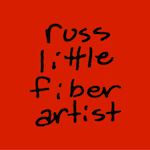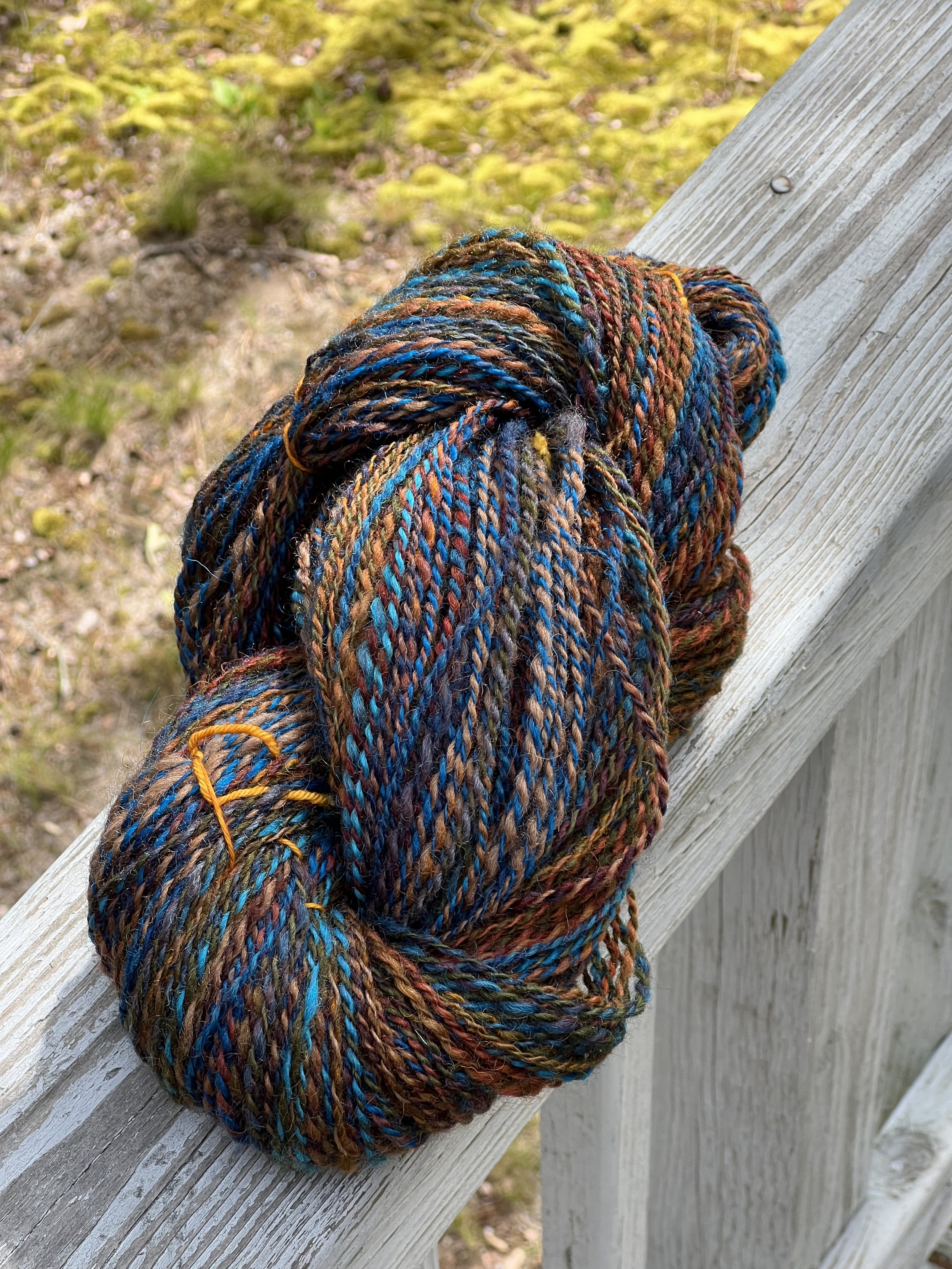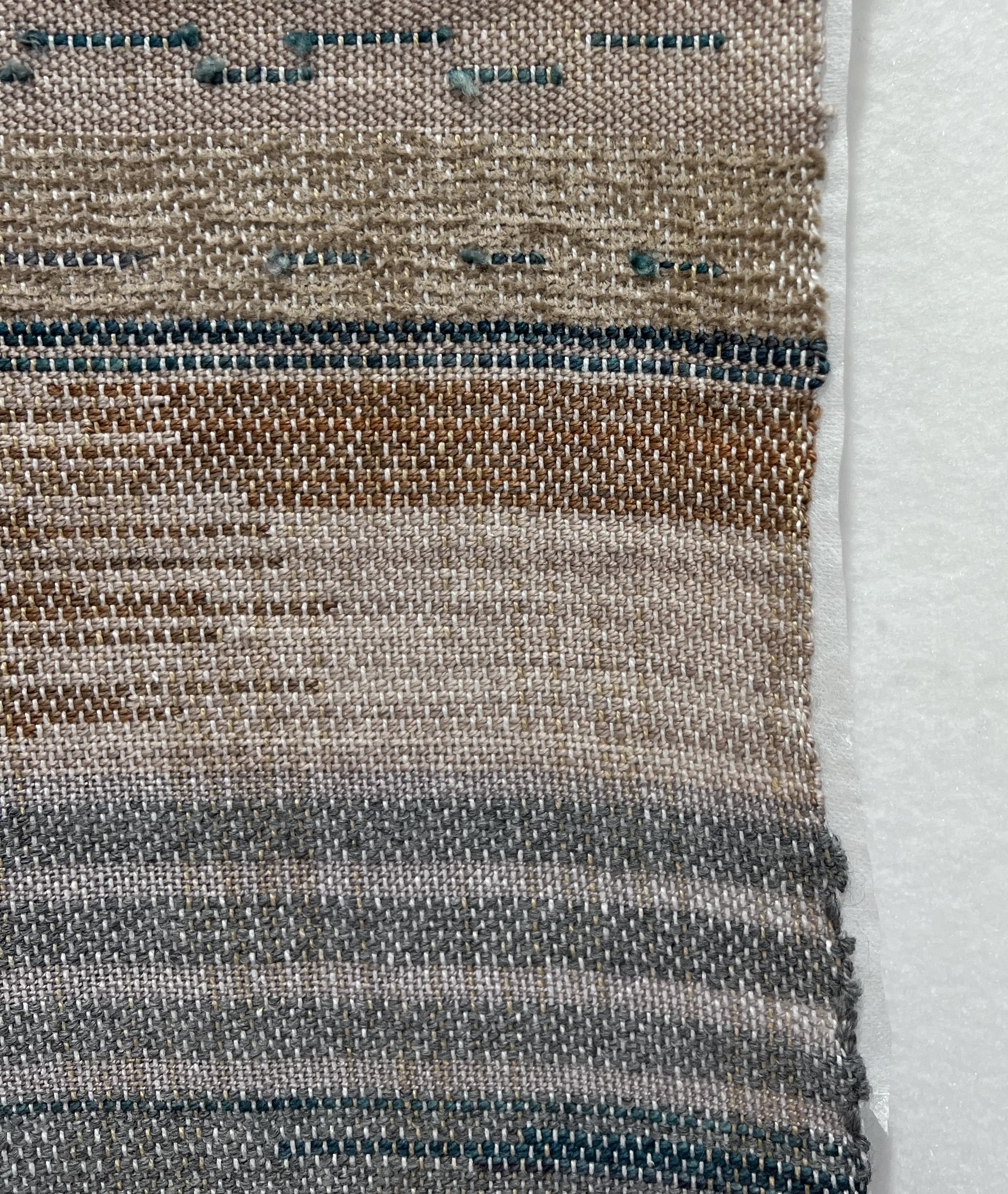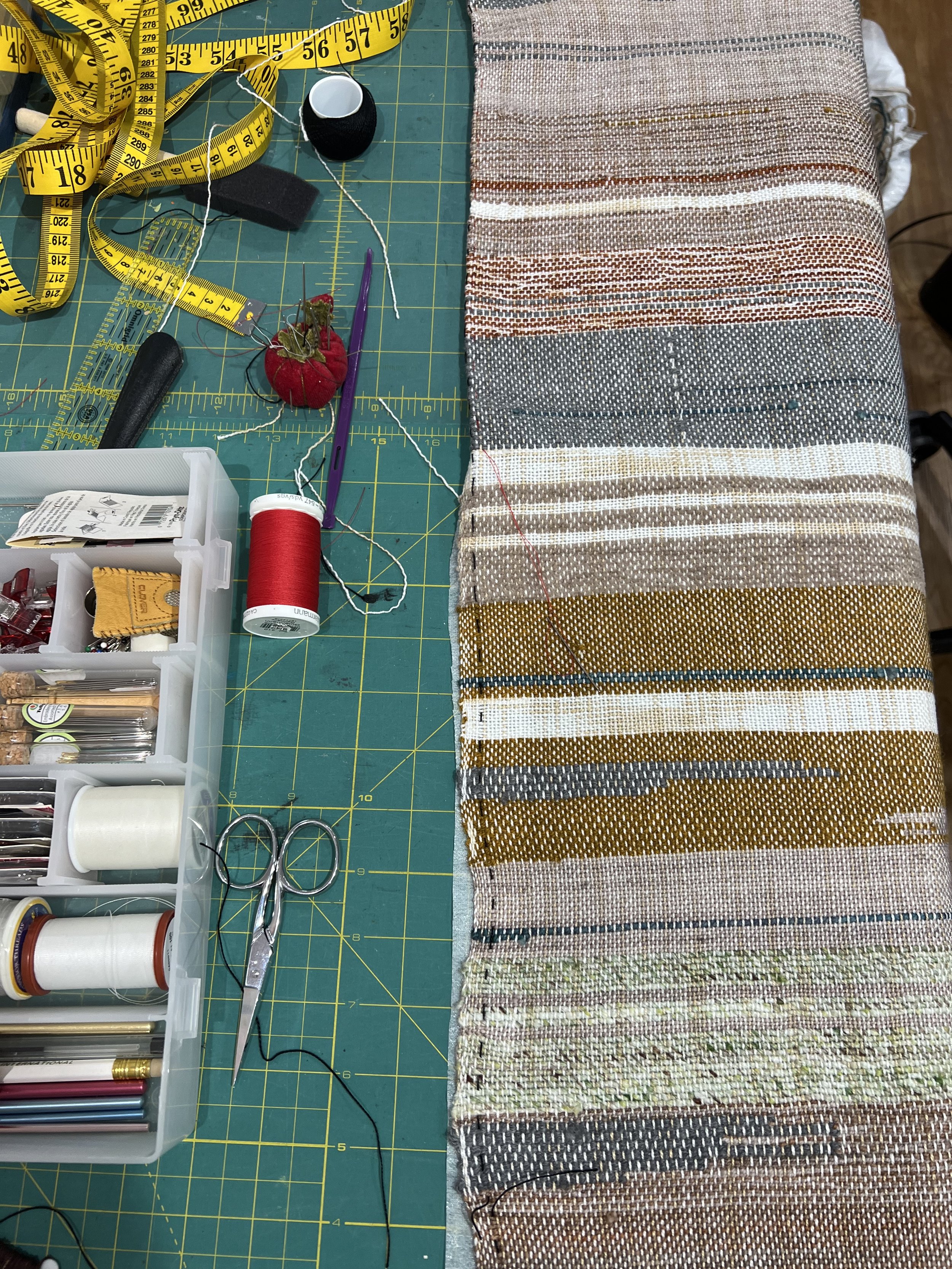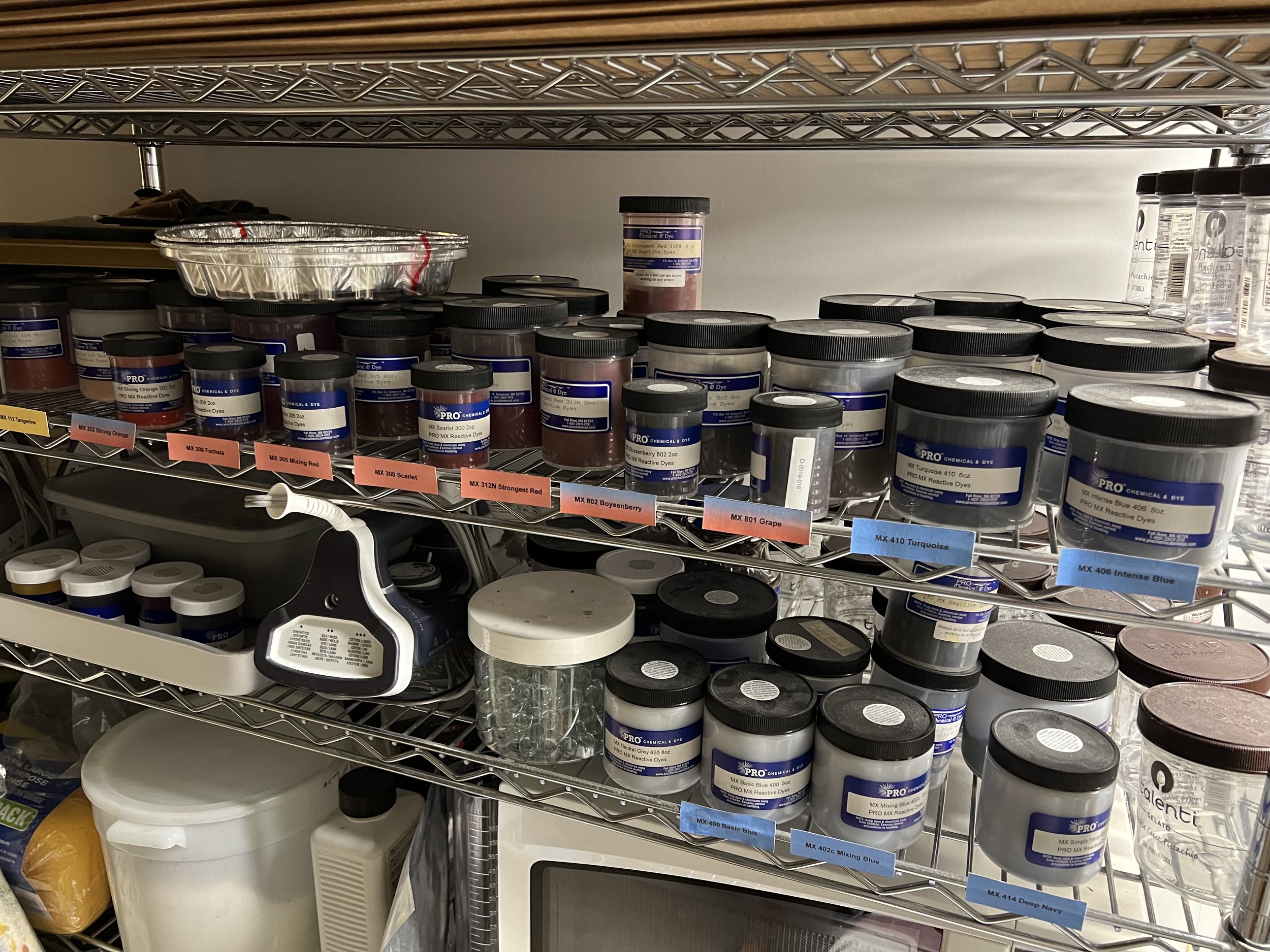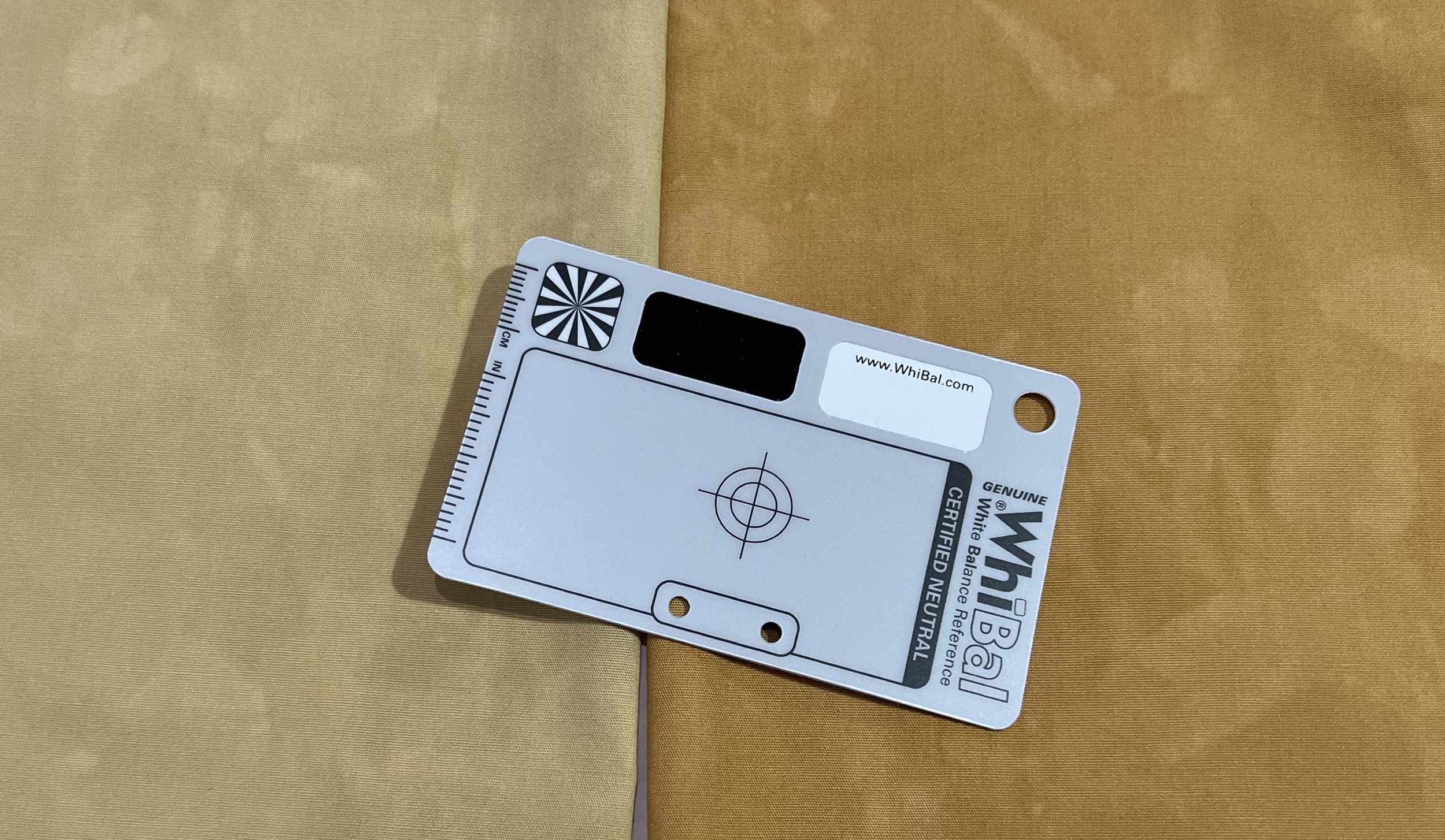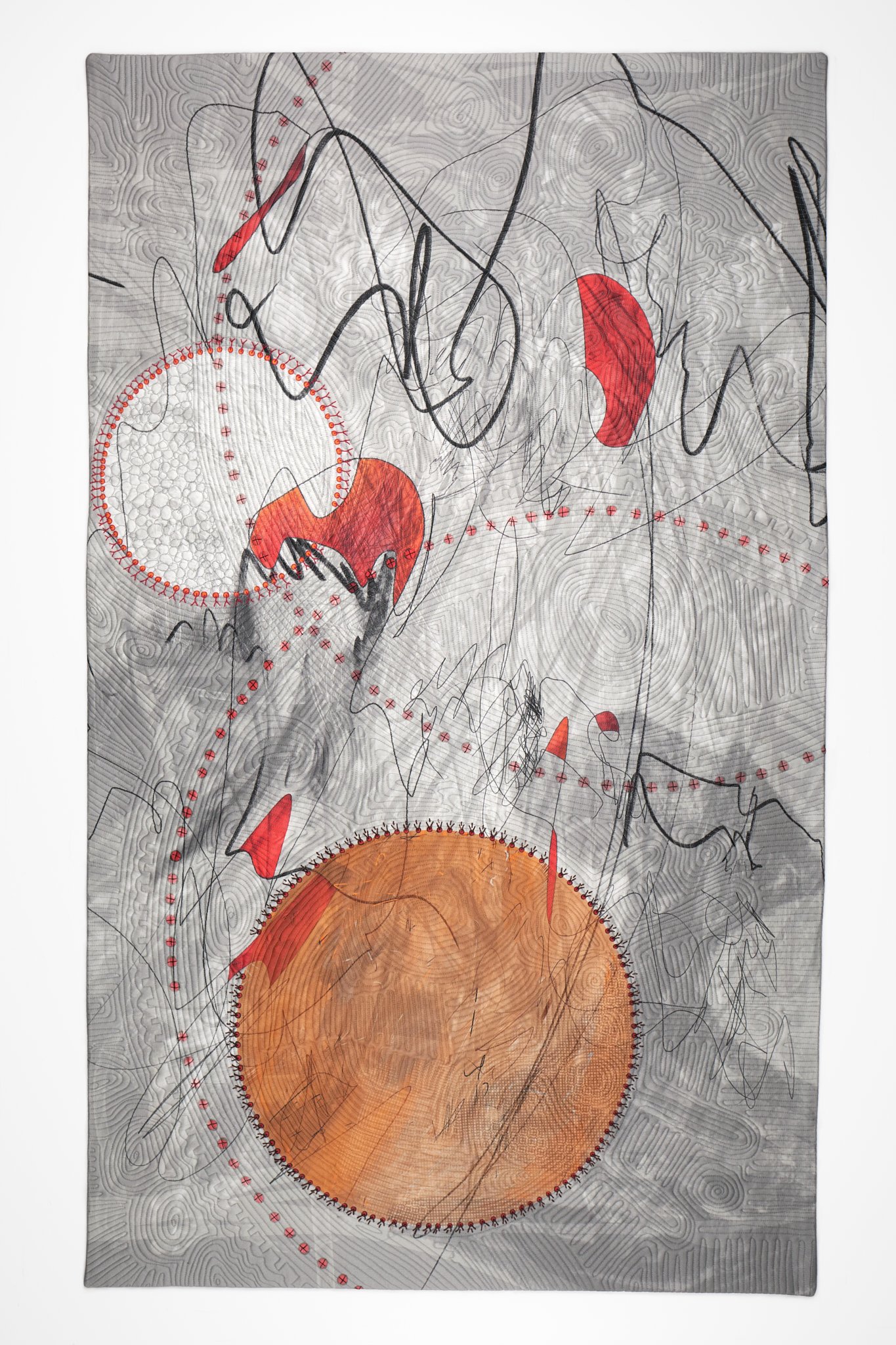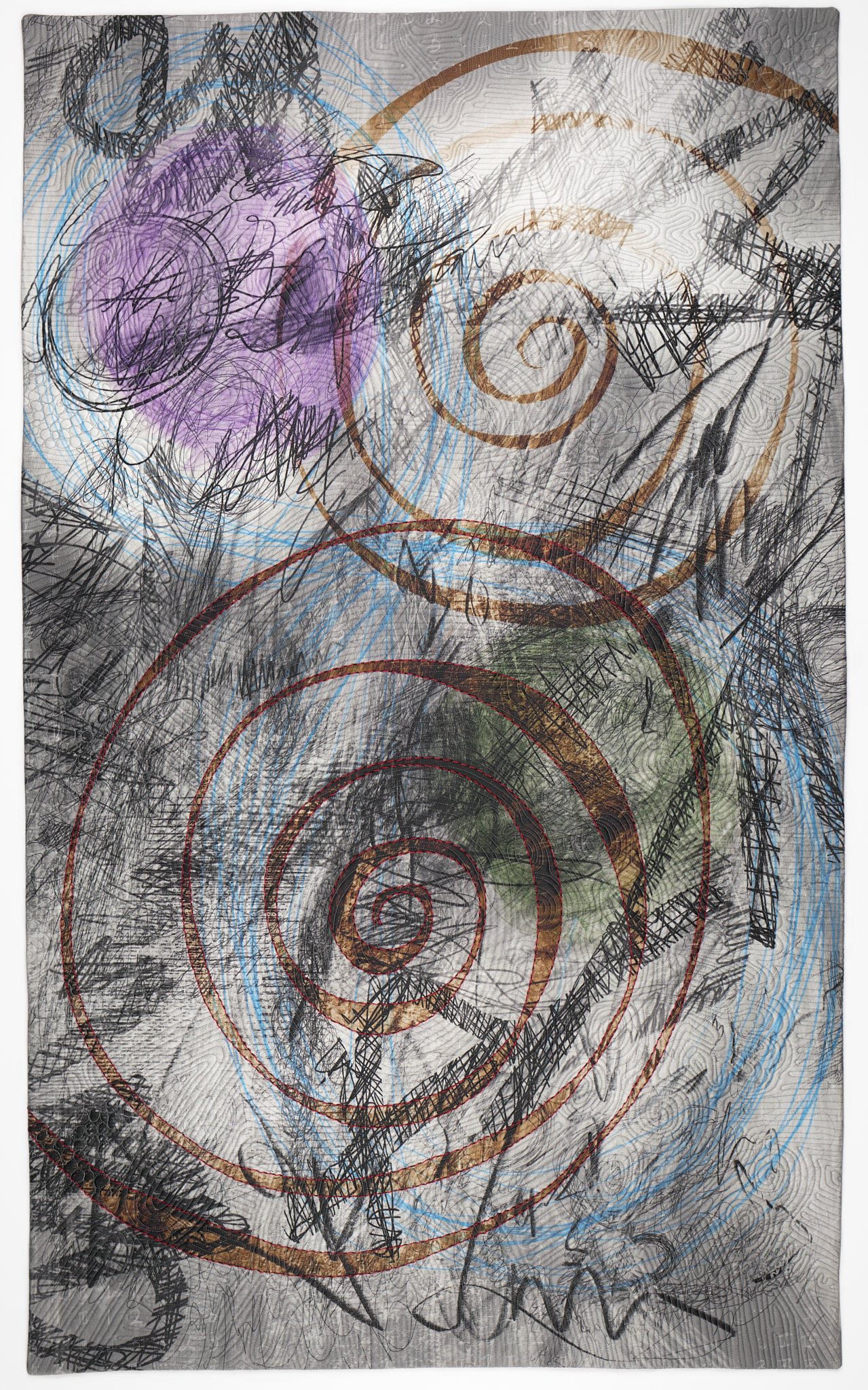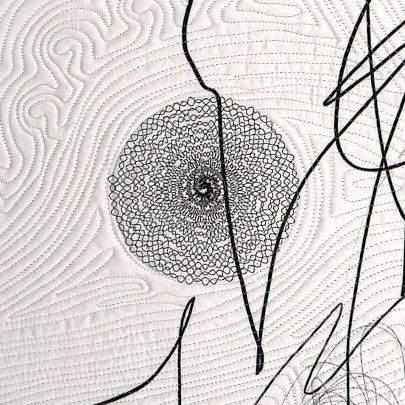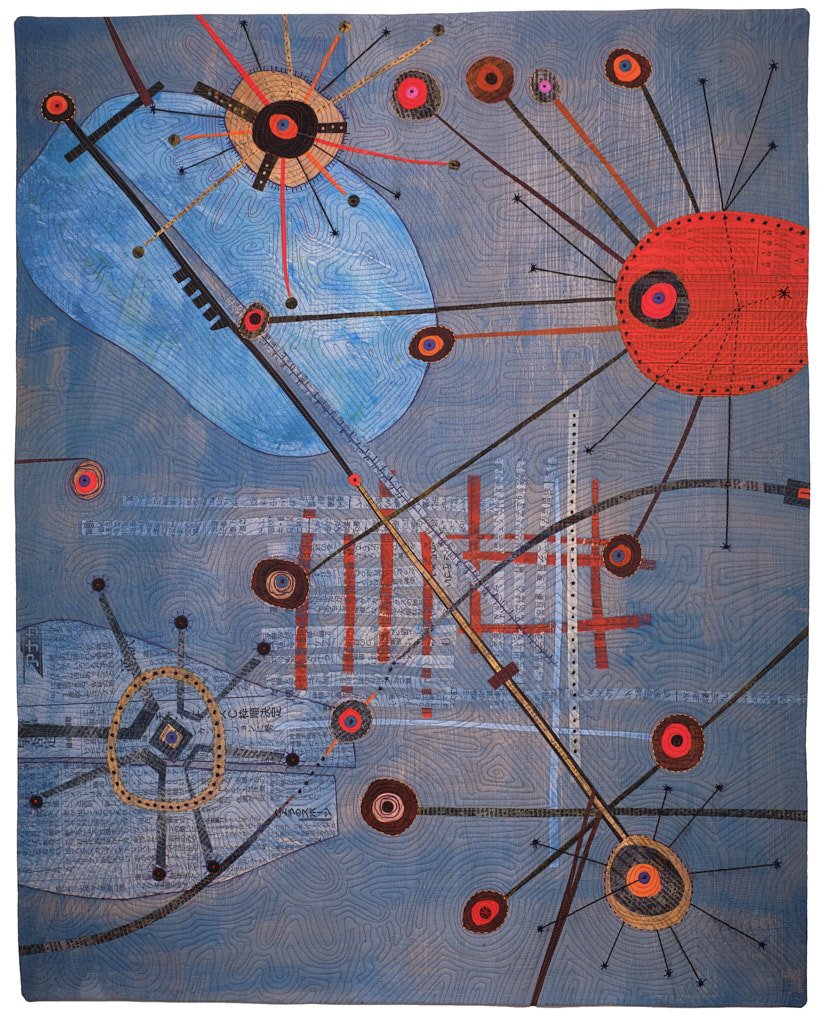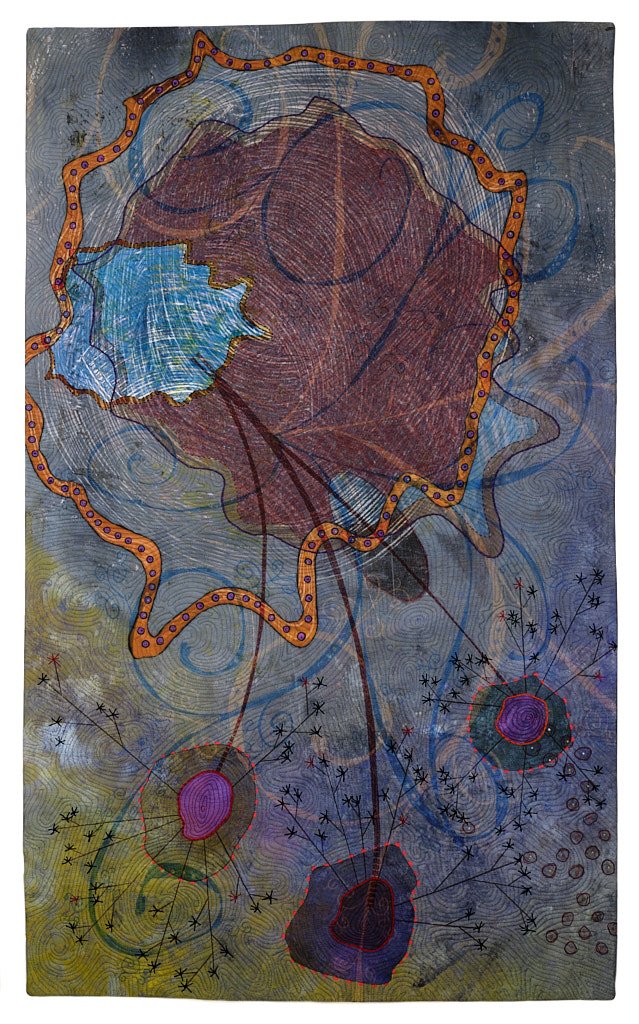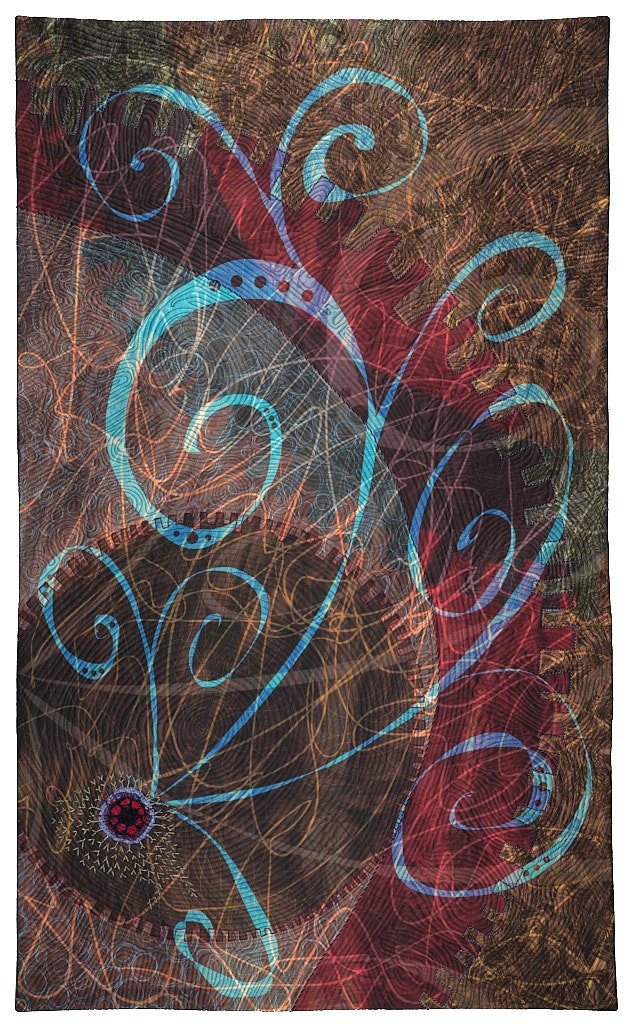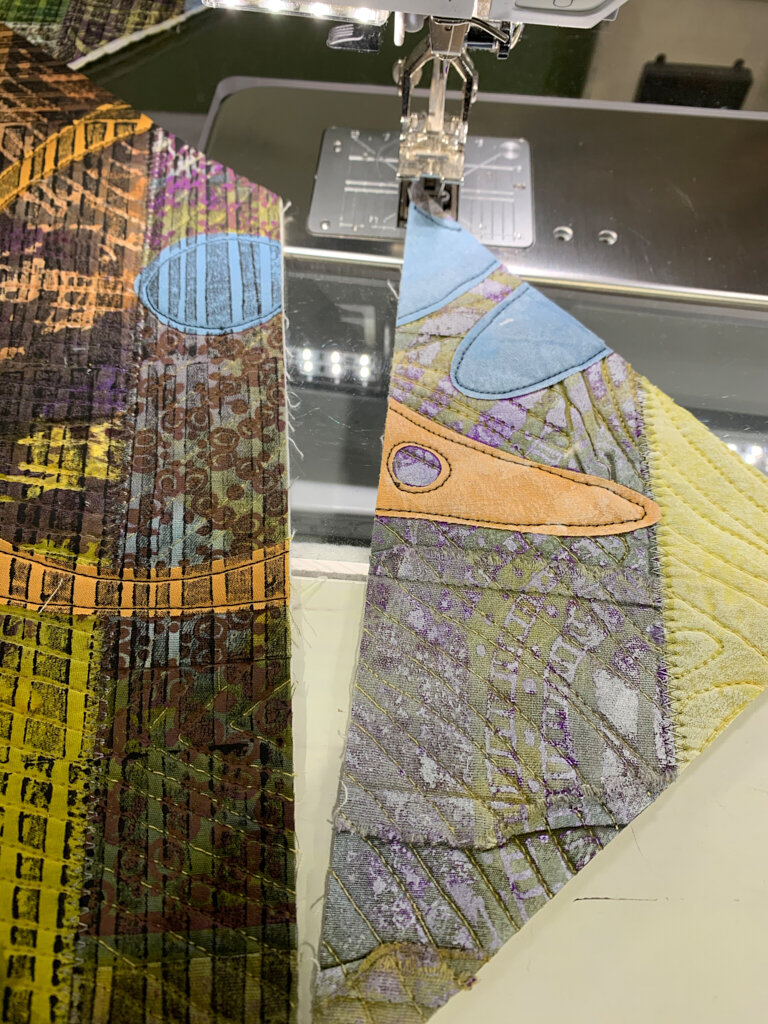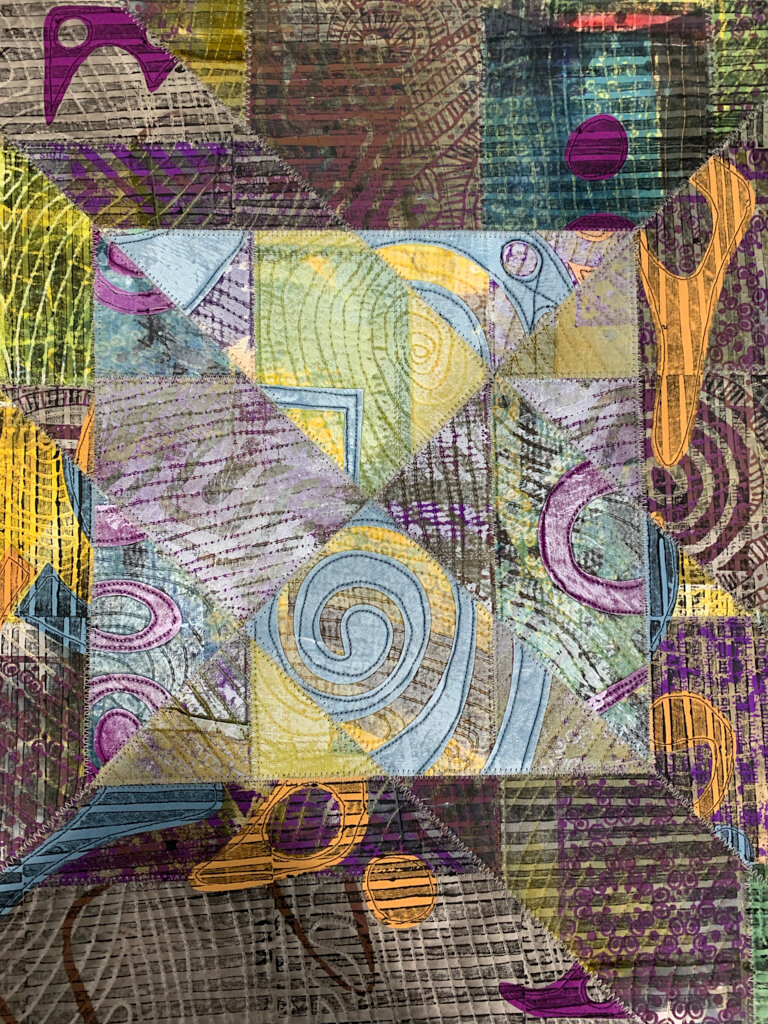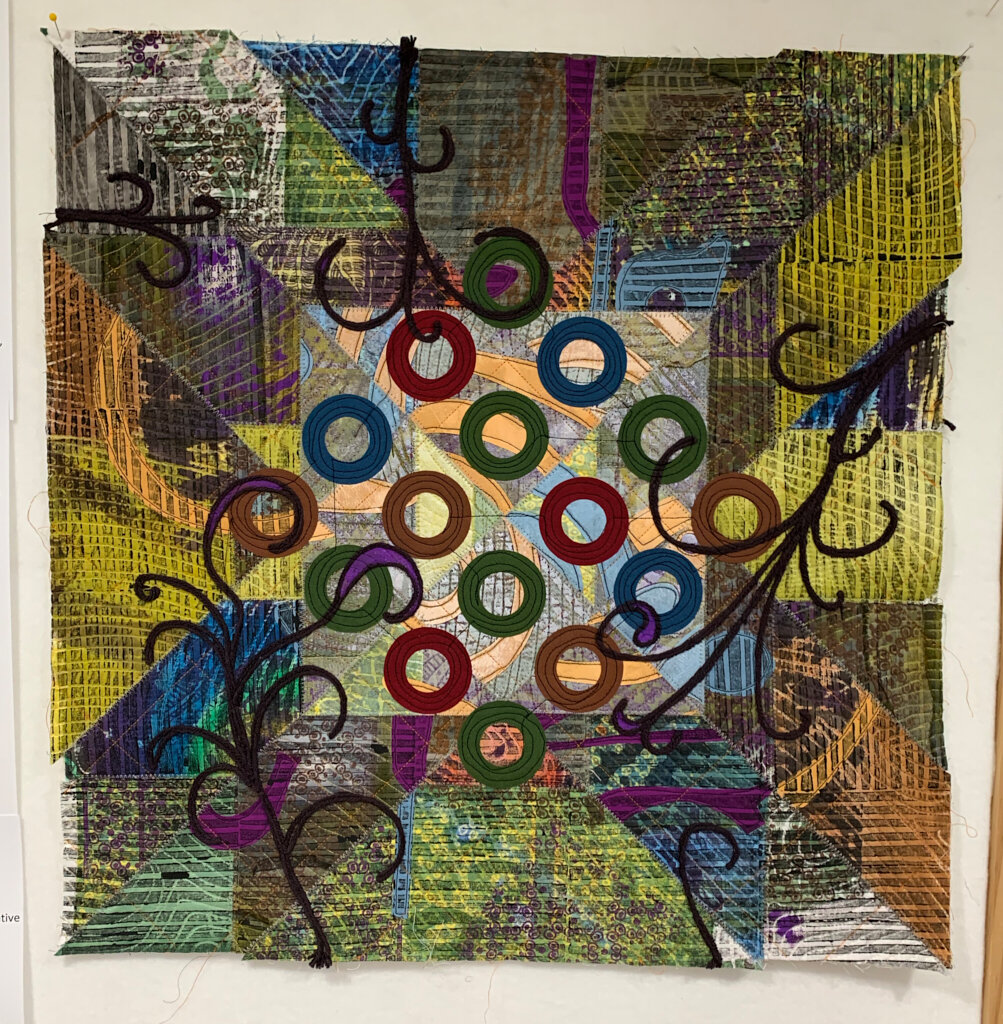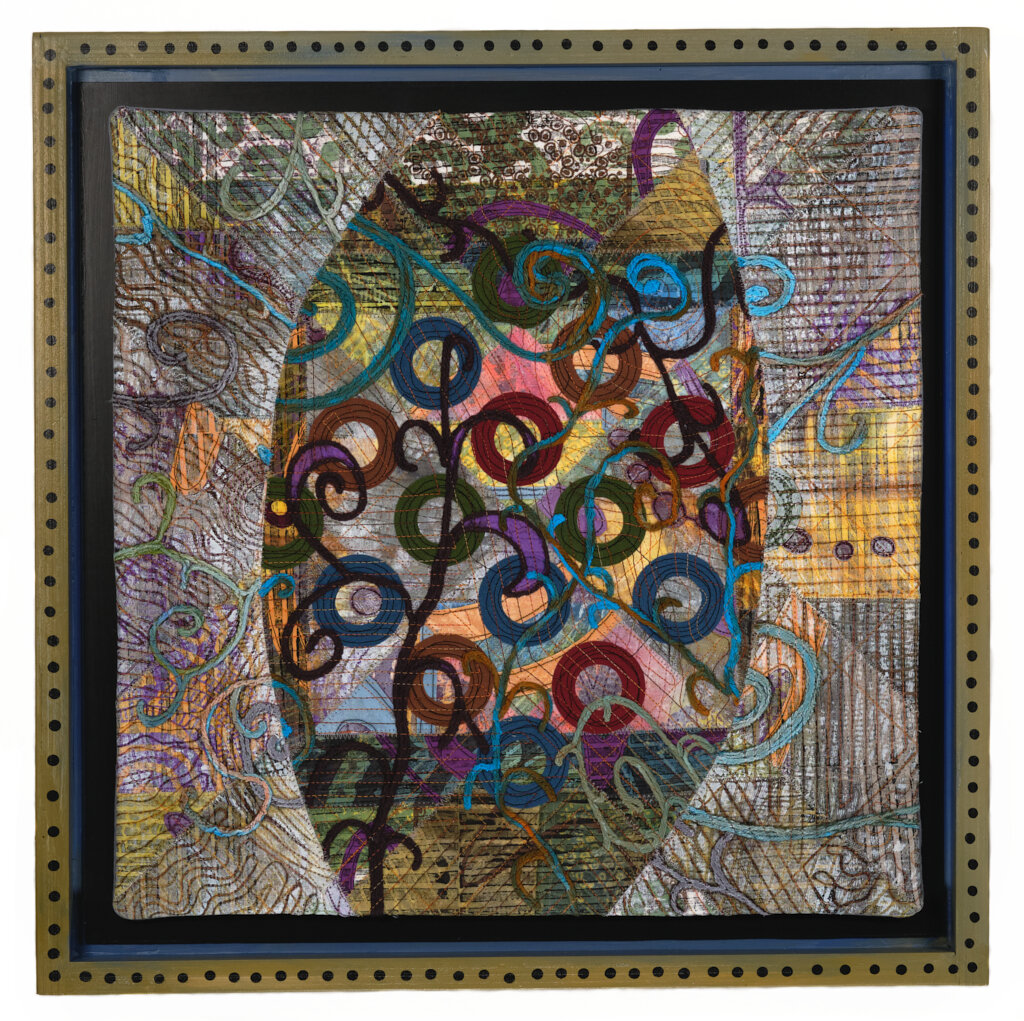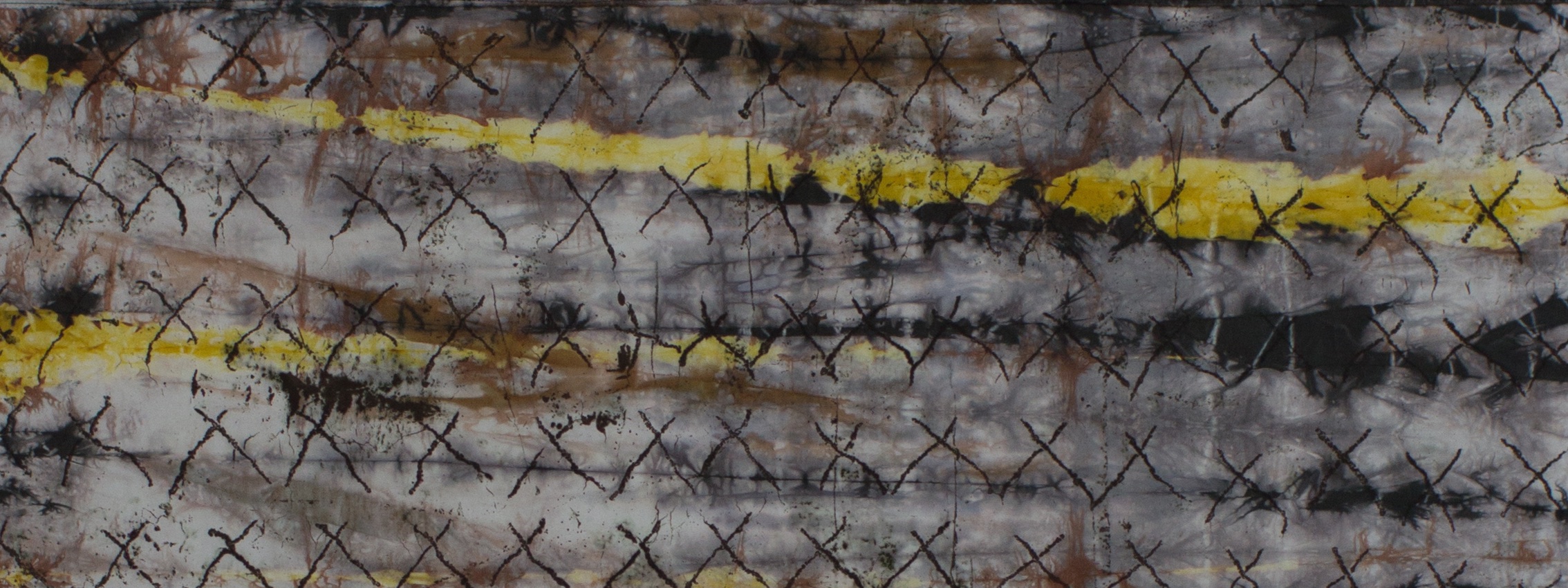
Thoughts & news
A word about prostate health and my treatment journey
DISCLAIMER: This statement lives on my art studio website so that I can link to it from various social media channels. If you’re not interested in this topic, which has nothing to do with art, then please skip to the next thing in your reading queue. HOWEVER, if you are a person who has a prostate gland, regardless of your gender identity, or if you love someone who has a prostate, then I hope you will take a few moments to read my story, which I promise will not be graphic or gory. Also, I am not a medical professional. I’m sharing my experience and making a good faith attempt to get the facts correct, but I am not an authoritative source.
My goal here is to talk to other prostate owners about a topic that we just don’t talk about because, yuck, who talks about that? The subject is what happens in the bathroom, or rather what doesn’t happen. If you find that it seems like it takes a little extra effort to pee and that 10 minutes later you’re ready to go again, that might be a sign that your prostate is enlarged. It could also mean that there is something else blocking the flow of urine out of your body. Painful urination, stopping and starting, weak stream, and bladder pain are among a collection of symptoms collectively referred to as LUTS (lower urinary tract symptoms). They are also causes for concern that you should discuss with a doctor. OK. There. I said it.
I will spare you my own medical history, including all of the details of my urological history. It is sufficient to say that about 7 years ago I had pretty much all of those symptoms. My primary doc referred me to a urologist, and after an exam and some tests he diagnosed me with BPH.
I knew that I wasn’t alone. A web page maintained by the Harvard Medical School states that “By age 60, half of all men will have an enlarged prostate, a condition also known as benign prostatic hyperplasia, or BPH. By age 85, the proportion reaches 90%. (https://www.health.harvard.edu/mens-health/the-growing-problem-of-an-enlarged-prostate-gland, accessed on 2/28/2025). Simply having some degree of prostate enlargement does not mean that you have acute symptoms, but it’s definitely something to keep an eye on.
I had then, and still have, a normal PSA level (Prostate Specific Antigen, a simple blood test to screen for prostate cancer), so there was no reason to suspect prostate cancer. At what age and how often to have a PSA test is driven by a number of factors. The Johns Hopkins website does a great job of laying out a combination of age, family, and health history risk factors that determine if it’s annually, less frequently, or more. (https://www.hopkinsmedicine.org/health/conditions-and-diseases/prostate-cancer/prostate-cancer-age-specific-screening-guidelines#:~:text=For%20most%20men%2C%20every%20two,less%20(or%20more)%20frequently, accessed on 2/28/2025). What you need to know here is that you should get tested and take responsibility for remembering when you should be tested again. Don’t just leave it to your possibly overworked primary care doc. You can be relatively asymptomatic and peeing just fine but still have an elevated PSA. Prostate cancer is a silent killer of men.
Back to my story. I started taking Tamsulosin (Flowmax) after my first urology appointment and it was like turning back the clock. Everything was working again. I took the pills and went in for an annual urology checkup, which wasn’t much more than talking to a nurse practitioner and having a blood test to track PSA. That changed in late 2024. I started having more of those symptoms. During my annual checkup I had a bladder scan (a 30 second ultrasound that measures how much urine is in the bladder). Apparently there was enough that the tech raised her eyebrows. Why was this surprising to me? DENIAL. The more I thought about it, the more I realized that I’d been having problems for 6 months or more. I just didn’t want this to be happening so I pretended it wasn’t. We doubled my dosage of Tamsulosin and that made a slight difference but not much, and certainly not enough.
So more tests, a couple of consultations, and I made the decision to have Aquablation treatment to remove a portion of my prostate. I’m not going to go into all of the details of my particular case. If there are folks who want to hear about the pre-op testing, the hospital experience, and the post-discharge stuff, then maybe we can find some way to have that conversation on some other platform. What I’d like you to know is that it wasn’t as bad as I feared. I did have some post operative issues related to how my body reacts to general anesthesia, but it resolved over a couple of days. According to the surgeon the procedure all went according to plan. I’ve had some discomfort, but nothing that I would call big pain. It’s all been managed with Tylenol. As of this writing it’s been a week since surgery and I think I’m on track to have a good outcome overall.
Part of my recovery is my prostate healing from having about 40% removed. Part of it is my bladder muscles recovering from being strained for months. This last bit is super important. Big or small prostate, unless you’re also dealing with prostate cancer, your bladder is the real issue here. If you ignore these symptoms and injure your bladder muscles it can lead to some really unpleasant things that I expect we’d all like to avoid–things like incontinence and dependance on catheters to empty your bladder. Those symptoms if, left untreated, can be temporary or permanent even after surgery.
Nobody wants to have surgery, but this stuff is a matter of preserving your health and quality of life–and it could be a matter of life and death.
Here’s what I want you to take away from my experience:
Get your PSA level tested.
Go to your doctor or a urologist if you notice any change in your peeing experience. Don’t put it off.
Think objectively about those changes and don’t pretend that it’s no big deal when something is off. Unless you’re a medical professional with expertise in this area, you are not qualified to diagnose or self treat, regardless of how good you are at Googling. Ask me how I know?
Be brave. If surgery ends up being part of your journey then it is very likely not going to be as bad as you imagine. The longer you wait and imagine what it might be like, the worse things get and the more psychological damage you inflict on yourself. I’m squeamish, bashful, and don’t have an especially high tolerance for pain. I got through this. I do not regret my decision to have surgery. You can do it too.
And finally, do what I’m doing. Don’t be afraid to talk to your friends who have prostates. They might be a good source of information or comfort. Perhaps even more importantly, you might be the person who makes them think twice and talk to their own doctors. You could be the one who starts your friend on a path that saves their life!
See my artwork at McLean Project for the Arts
I’ve been invited to participate in a curated group exhibition of noted local textile artists at the McLean Project for the Arts. The show, titled “Pieced Together We are Whole,” was curated by Nancy Sausser and includes quilted textile compositions by Megan Koeppel, Susan J. Lapham, Dominie Nash, John Paradiso, Imani W. Russell, and me. No exaggeration, I’ve been sick since Christmas day and I wasn’t sure if I’d make it to the opening. Now, three weeks on, I’m feeling much better, not a danger to others, and looking forward to the opening reception tomorrow night. Here are all of the particulars for the planned events related to the show. Local folks often ask me, “Where can I see your artwork?” and the answer is almost always “Nowhere nearby.” If you live in the DC/Metro area this is a great and somewhat rare opportunity to see my work close to home.
McLean Project for the Arts is located in the McLean Community Center at 1234 Ingleside, Ave, in McLean, VA (a couple miles from Tysons, right off of Route 123, near the intersection with Old Dominion Drive). The gallery is on the second floor. It’s really a lovely space.
Exhibition dates:
Jan 16 - Feb 22, 2025
Events:
Thursday, Jan 16, 7-9 PM Opening reception
Saturday, Jan 25, 11 AM, Artist Talk
Tuesday, Feb 11, 11 AM, Tea & Talk (more time with the artists)
Looking back at 2024
2024 has been a whirlwind, an emotional roller coaster, and a watershed year all at the same time. Certainly every year brings change; that’s inevitable. But, some years bring more than others. In my opinion the election was a disaster, and one that we’ll be unpacking, processing, and trying to rise above for many years to come. I just want to acknowledge that because it’s something that affects every one of us. But, in this look back over the last 12 months I’m going to focus on my year in the studio.
I’m not doing this to strut around saying “Look at me.” Instead, this writing helps me reflect on the plans I made and how they do or don’t line up with what came to pass. This reflection is the first step toward contemplating what comes next in 2025. And, it’s also a nice way of sharing an update with those who haven’t been along for the entire ride. Be forewarned: because I’m mostly writing for myself this post will likely be on the longer and wordier side. Feel free to skim or just look at the pictures. :-)
For many years I’ve tried to hold the month of January as a time to think and explore new things. I’ve found that asking “What if…,” and “I wonder…” questions without focus on making any particular art or completing any specific task quite often reveals a path forward that I might not have considered if I had just charged ahead. Of course there’s no reason for this to happen at the end of the calendar year. I could do this at the Summer Solstice or some other arbitrary time, but January works quite well. Curiosity and learning keep me engaged through the darkest days of winter when so many of us struggle, and that’s helpful.
Best laid plans
Early in the year several ACN colleagues and I participated in a short workshop offered by a fellow ACN member titled, “Dream Big.” Our goal was to visualize a point in the future—five years, ten out—and describe in one page of writing what that looked like. How was our work/life balance? What was happening in the studio? What goals had we achieved? Where were we living? All of those things. We then assigned relative values of importance to those things and began listing what it would take to get from where we are now to where we want to be then. We also turned those areas of interest, goals, and tasks into a Venn diagram for the coming year. It was a visual representation of the size, content, overlap, competition, and conflict between the various parts of our lives. For me it proved to be a great way to distinguish between the things that must happen, those things that are achievable, and those that are aspirational. Have you ever written a way-too-long to-do list? If so, then you likely know the value of finding focus. I can’t say that the relative success of 2024 is due entirely to the Dream Big exercise, but I will say that narrowing my focus and placing my projects in a longer term context seemed to keep me on track.
Interaction #5. Hand dyed cotton, hand woven, machine quilted, embellished with hand spun yarn and buttons.
Weaving
My January curiosity this year led me to take a 2-day intro to weaving class at a local fiber shop that’s walking distance from home (well, not really in January). I went into it with no expectation other than I would learn new things—I’d never woven anything other than a potholder in elementary school—and I was absolutely not interested in producing anything. The instructor said that we would be weaving a scarf, which she all but guaranteed we would absolutely love when it was finished. Much to my surprise that’s exactly what happened—and I loved the weaving process and the flow state that happened as I worked. By May I had added an 8-shaft Schacht Baby Wolf floor loom to the studio and since then I’ve been searching for a balance between quilt making and weaving.
I knew going into the loom purchase that this was a problem/opportunity that I’d be wrestling with.
Was I becoming a weaver? Yes.
Was I going to let the weaving influence the quilting? Maybe.
Could I somehow combine the two? Again, maybe, but was that a good idea.
Over several months I created four finished art pieces that are handwoven, quilted, and include additional embroidered details. I learned a lot along the way, but in the back of my mind I kept wondering if I was trying to drive a square peg into a round hole. I believe that the answer is “So far yes, somewhat.” I had a good critique with David Hornung and came away thinking that, although the pieces like Interaction #5 (right) are visually interesting, there might be a bit of a struggle going on between the complex will weaving pattern and the graphic composition.
I’m not unhappy with any of the woven quilted pieces, but I think I’m going to explore some other ways of working with my handwoven cloth that might not include quilting. I’m particularly interested in Moorman inlay, and I think that might be my January exploration for 2025.
Spinning
As if the weaving wasn’t enough, I took a one-evening drop spindle spinning class because I was curious about swimming a little bit further upstream from cloth. Now that I could make my own cloth, could I also make the yarn that I used to weave? The drop spindle taught me humility. I know some people love those things, and I’m not one of them. I really did try. I found myself thinking that this was something that I could live well without, but I still couldn’t shake the interest. So I bit the bullet and bought an e-spinner, which is an electric spinning “wheel”. There is no wheel, per se. It’s just an electric motor that rotates a flyer and bobbin. I figured this was compact, easily resold if I hated it, and my last chance. Either I was going to succeed or I was going to make my peace with not being a spinner. Of course I loved it. I spun like a fiend, bought a raw fleece fresh off the sheep at the Maryland Sheep & Wool Festival, which I then cleaned, dyed, combed, spun, and wove, Since I’m really not interested in learning to raise or shear sheep, I have likely arrived as far up the textile supply chain as I’m willing to go. In September I purchased a Schacht Matchless spinning wheel. It’s a proper double treadled dual drive wheel. It’s been a real joy, but as with so many things, spinning is something that’s easy to learn and a lifetime journey to master.
Natural dyeing
If there was a wrong turn or a time when I should have paid closer attention to my Dream Big plan, then I would have to say it was when I signed up for a 12-week online class on using natural dyes. It wasn’t an entirely misguided adventure. I have lots of friends who’ve done the same course and raved about it. Natural dyes (those based on plant material, minerals, and insects (yes, bugs) produce some beautiful, complex colors. I’ve spent years developing some level of facility (can I say mastery?) with fiber reactive MX dyes, and I’m applying that learning to washfast acid dyes for wool. Both of these are chemical dyes. Well, let’s cut to the chase. The natural dyes take a lot of time and effort. They’re also a bit of a mess. Yes, the colors are nice enough, but after 12 weeks of work (1-2 days each week) I can now say that I am not a natural dye person. Give me some good ole better living through chemistry.
Collage
As autumn approached so did a long-planned-for workshop at the Crow Timber Frame Barn with David Hornung, this one billed as “Collagapaloosza”, which was a somewhat ridiculous name for a 2-week collage open studio workshop. I and most of my fellow students were a cohort of long-standing color, composition, and collage students of David’s. We worked side by side, listened to lectures, ate wonderful food, had stimulating conversations, and enjoyed the beauty of the farm. In terms of artwork, we all did our own thing under David’s watchful eye.
I was anxious going into the class because I hadn’t been working on collage or painting all year. I was really into my weaving thing and I wanted to do work that would feed that. I just wasn’t sure how that was going to work. I told David ahead of time that I was planning to explore weaving with paper and he was supportive. So that’s what I did. The result was not what I expected. I arrived with a couple of test compositions that I’d used to work out the method, adhesive, etc. For the first few days I produced compositions of woven structures that visually hovered over the background. By the end of the two weeks (below) I was producing a series of geometrically similar compositions, each playing with some aspect of color or contrast, AND the contrast was getting lower and lower. It was interesting because I’ve never stuck so closely with a single idea for that long in a workshop. So, what began with anxiety about how I would reconcile different aspects of my studio life ended with both learning and some interesting ideas that I think I can apply to weaving.
Workshop collages on the wall at the end of week 2.
Exhibiting
It’s been a good year for exhibiting artwork, and it feels like I’ve received more acceptances than rejections—though I try not to count.
“Interaction #3” was included in “Artist as Quiltmaker XX” in Oberlin, OH.
Mark Rengers Gallery in Sewickley, PA selected 8 of my pieces to include in a two-person show titled, “Making Me.”
Art Quilt Network shows continue to tour and I just had two pieces juried into the latest show, “ReVision.” One of those pieces is "Interaction #5” (above), which is one of the new handweaves.
And, the biggest news of all is that I’ll be returning to Quilt National in 2025 for the third time with “More Than Black & White #4.”
There are other things in the planning stages for 2025, so I’m feeling pretty optimistic.
A friend shared an important thought recently (and I’m paraphrasing here):
We make art because it’s our imperative, our calling. We strive to show it because it’s how we connect with the world. Rejection letters hurt, but we dust ourselves off and keep going because that’s what artists do.
Now what? And why?
I will definitely repeat the “Dream Big” planning work that I did in January 2024. Weaving will be my focus in January, but also beginning some new digital paintings that will become quilted textile. Earlier this year I was anxious about weaving displacing quilt making. I spent time trying to figure out how to make quilted artwork out of handwoven cloth. Now I feel that I might be moving toward two different modes of work coexisting in the studio and influencing each other without having to BE each other.
A video tour of my studio
I’ve run into a couple of situations in the last year or so where I wanted to give someone a look at my studio but didn’t have recent pictures or video available. I’ve finally gotten around to making a short video that shows the state of things as of late July 2024. Don’t be fooled by the relative tidiness of the place. I’m sorry to say that there’s usually a good deal more clutter. I hope you enjoy the tour.
Interaction #3 @ Artist as Quiltmaker XX
“Interaction #3” is included in Artist as Quiltmaker XX on view at Firelands Association for the Visual Arts (FAVA) in Oberlin, OH. The show runs 11 May - 7 July, 2024. Can’t make it to Ohio? You can still see the artwork included in this outstanding biennial show on the website prepared by the show organizers. It’s a feast for the eyes, and I’m so happy to have my artwork included among so much other outstanding work.
Spinning off in new directions
For years I’ve observed that some of my best teachers have been the ones who mixed theory and practice, but also encouraged “what if” thinking. To be sure, there are some student curiosities that need to be discouraged. For example, “I wonder what will happen if I mix these chemical solutions?” can lead to danger, injury, or worse. Other what-ifs might be a waste of time or materials. From my own area of study, if someone said to me, “I wonder what would happen if I tried to dye this cotton fabric with acid dye?” I would say that’s an interesting question, and the answer is that nothing useful would happen because acid dyes don’t react with cotton or other cellulose fibers so you’d get a stain, but not a permanently set color. BUT, there are bunches upon bunches of other questions that a curious person might investigate that could lead to some profound experiential learning, especially under the guidance of a good teacher—and, I am a curious person.
My first full skein of handspun yarn. It’s 2-ply merino, corriedale, and mystery wool, variable in size, but mostly chunky overall. I’m working on spinning thinner.
Sometimes my curiosity leads me astray. Sometimes it leads to interesting personal discoveries that alter my path in ways that ultimately alter my destination. In a previous article I wrote about learning to weave on a rigid heddle loom and how I was experimenting with incorporating handwoven fabric into quilted compositions. Back in March—on St Patrick’s Day to be precise—I took a 2-hour class on how to spin wool fiber using a drop spindle. It was interesting, but nothing that left me saying, “Oh I need to do more of this.” Leap forward a couple of weeks and was struggling to get the hang of that drop spindle because, one: I remained curious about making my own yarn for weaving or knitting; and two: I was not going to let that drop spindle get the best of me.
I got to the point where I was able to spin with the drop spindle, but it was uncomfortable, awkward, and really slow. There are people who absolutely love drop spindles. Personally, I felt as though I needed one or two more arms to manage the fiber, spindle, and drafting. I was at a crossroad—not quite Frost’s roads diverging in a yellow wood, but a decision point nonetheless. Was I curious enough to continue, or should I find someone out there who would like to adopt my spindle and fiber? I was curious…
Leap forward another couple of weeks and we come to today, just about a month after my first spinning class. I now own an Ashford E-Spinner 3 (an electric motor-driven compact spinning wheel that’s smaller than a shoebox), several bags of wool fiber, a blending board, and various other spinning sorts of tools. I’ve taken 3 online video-based classes on spinning and fiber prep, and I can safely say that I’m down a rabbit hole. Oh yeah, and based on some email’s from FedEx, I think my Schacht Baby Wolf 8 Shaft loom is arriving this week. This my be more of a rabbit warren than a mere hole. This is what I get from indulging my curiosity.
My husband might see this situation differently, but from my perspective, for years I have resisted many of my curiosities—not all , but many. My general M.O. has been to wonder about something, read about it, ruminate, then convince myself that I’ve already got too much on my plate and I need to focus on my “stated mission.” That mission—if we can use that term—has been something like, “I’m a fiber artist and the majority of my artwork finds it’s final expression as 2-D quilted textile compositions.” So, studying color theory and dyeing were things I did in pursuit of better fabric. That’s true, but I also love both of those things simply as areas of exploration and learning. I began making abstract collage compositions on paper, and again, these were in pursuit of better textile compositions. In my mind, everything needed to somehow flow into the art quilt process. As a result, anything that seemed to be a “square peg“ was dismissed.
For the last few months I’ve been somewhat unconsciously trying a different approach: follow my curiosity and figure out if or how it fits later, AND don’t dismiss something out of hand because of the possible consequences. In other words, I’m trying to embrace an even deeper what-if. I draw the line a sheep shearing, but maybe someday I’ll tackle a fleece (the raw wool right off of the sheep that needs to be cleaned and combed or carded). The Maryland Sheep and Wool Festival is in a couple of weeks!
Bottom line: Maybe I am evolving into an artists whose yarn, woven cloth, art quilts, and collages inform one another and reflect both my past and my curiosity. I hope there is (or will be) a clear voice and aesthetic that connects all of these parts together.
I hope that you too are allowing yourself to follow your curiosity. It might lead you down a short side street or onto exciting new paths!
Making the most of naïveté
This article originally appeared in a slightly shorter form on the Art Cloth Network blog on 16 March 2024
I'm a new weaver. I've got a total of 5 warps and about 10 yards of cloth to my name, but I'm hooked. I've resisted weaving in the same way that I resisted knitting for so many years. I really did NOT need another needle thing in my bag of tricks to distract me. I have a friend in heaven--a very accomplished weaver--who prophesied this years ago and I know he's laughing now*. I'm not entirely sure that my resistance was the wisest course. But to everything there is a season, and perhaps this season (my 61st if you count by years) is the one. I'm now a passionate knitter and this weaving thing... I can't get over how quickly color and pattern develop as the shuttle flies back and forth and how much there is to learn.
All that being so, I am, as I said, a new weaver. With that comes a whole host of challenges--tension problems, unintended floats, and wonky selvedges, which are the left and right sides of the cloth that should be straight and neat but only become so with practice and mastery. The photo above is an example of a wonky selvage indeed.
I'm working on a project that incorporates lengths of handwoven cloth, and as I prepared to join those pieces to make a larger whole I realized that those wonky edges posed a problem. I could cut them straight, but even to the untrained eye that waviness of the warp threads close to the edges would be obvious. Or, I could cut farther into the width of the cloth, sacrificing something like 25% of the total width to get to a straight edge that lined up with straight warp threads. Or, I could look at my bouncing baby cloth and love it for who and what it is--early work by a student--and honor the naïveté of the line formed by that wonky edge.
That's precisely what I'm doing. I'm following the natural edge of the cloth, finishing it, and even accentuating it with additional stitch.
I pulled out a warp thread somewhere between 1/2 - 3/4 of an inch in for each selvage then marked that line clearly with long stitches in black pearl cotton. I then turned a hem along that marked line, basted it in place, and pressed. All of that you can see in the image above. The image below show progress on a hand stitched overcast finish on the hem using hand dyed 6-strand embroidery floss.
It's an entirely innocent line and an unintended mark that has a power of its own. Though the maker is hardly young, perhaps the mark has some youthfulness in the sense of one in the early stages of a journey.
Wherever you are in your own artistic journey, don't lose sight of the horizon, but honor the work that you are making now, if only because it is a milestone along the way.
* Randy, I hope you really are watching, listening, and laughing. You dropped so many pebbles in the pond, and the ripples continue to spread with no sign of stopping. You are remembered, cherished, and deeply missed.
Dye doesn’t die, but it does get tired
This is a techie article about dye and about some recent work I’ve done. I think it’s still of some interest to non-dyers, if only as a way of gaining insight into what goes on in the nerdiest parts of my brain. If this just isn’t your thing then I completely understand. Watch for a new posting on some other topic later in a week or two.
—————
So, here’s the thing: I have a lot of dye (no pun intended). What you see on those shelves are jars of pure MX fiber reactive dye powder. These various yellows, reds, and blues can be combined to produce a rainbow of colors. I know that some of the jars are 13 years old, and others—the first ones I purchased—are probably 1-2 years older than that. I used to do a lot more dyeing than I do today, especially when I was making and selling wearable art scarves.
Why so many jars?
I wasn’t far into my career as a dyer when I learned that MX dye has sort of a a shelf life. I say “sort of” because the dye powder in everyone of those jars can be used to put color on cloth, regardless of age. However, MX dye loses some of its tinctorial strength as it ages. By that I mean that the intensity of color (referred to as depth of shade, DOS) produced by a gram of powder from an older jar of dye will produce less color than an equal amount of dye powder from a new jar. That change can be observed in a year, perhaps less when you consider storage conditions (temperature, humidity, light(?), and tightness of the jar lid). So again, why so many jars? Well, I have binders full of 1” x 1” fabric swatches created with known and reproducible formulas. All of the swatches were created with fresh dye powder, and reproducing those exact colors requires equally fresh powder. As such, when getting predictable color was very important I got in the habit of purchasing new dye about every 1-2 years. That didn’t mean that I’d used up all of the dye I had, so it started to build up. I couldn’t just throw the stuff out. Right?
A short digression about my sample books. These books, and pretty much everything I know about dyeing, came from years of study with Carol Soderlund. She’s the dye muse for more textile artists than I can count. If you want to learn to dye and really understand what you’re doing then seek our her classes.)
A portion of a page from my Soderlund sample book that I created years ago in “Color Mixing for Dyers”.
What to do with all that dye
Perfectly reproducing a known color can be very useful, but it isn’t always essential. Sometimes just getting color onto the cloth and then figuring out what to do next is enough, and older dye can be great for that.
Obviously, there are other times when getting a more predictable result is preferred, but maybe getting into the right neighborhood on one of those dye sample pages can be enough. But, what if an individual older dye has lost half or more of its tinctorial strength? That could (and does) mean that mixing secondaries (oranges, greens, and violets) as well as subtly toned hues from old primaries using known proportions will produce results that are unexpected and usually disappointing. You’d end up getting the wrong hue and probably a weaker overall value than expected. In fact, that’s exactly what happens.
For these reasons I’ve been ignoring my older dyes and feeling stuck on the fence about what to do with them. Recently I began to wonder what would happen if I could quantify the loss of strength in a given jar of dye powder. If I knew how much more dye was required to produce a result comparable to new dye then couldn’t I adjust my color mixing proportions to account for that difference? The answer is yes
What I did and what I learned
I knew that I needed a baseline against which to measure the change in my older dye. In my case that was my Color Mixing for Dyers sample books. I also realized that, while dyeing swatches using the sample book recipes but old dye would allow me to see that the dyes have weakened, it wouldn’t give me a way of quantifying that change. For that I would need a gradation of values dyed using the older dye powder. Steps along that scale from light to dark could be matched up with swatches in the sample book and would give me a known fresh-dye recipe and a corresponding old-dye recipe. A also knew that this needed to be done first and foremost with the individual primary colors. The image below shows a gradation of red dye in my sample book and swatches I dyed in the last few days. I found the best corresponding swatches between the two scales, figured out the difference in dye powder required to produce them, then averaged those differences to come up with a single adjustment factor for that particular jar of red dye. (I tried regression and piecewise linear interpolation, but simple averaging seemed to produce the best result). After doing the same for a yellow dye and a blue dye I had three numbers that I could use to adjust the sample book formulas to account for the behavior of these three specific older jars of dye. And it work pretty well.
The image below shows a sample dyed using the formula for the swatch label 431 on the swatch page. The quantities of yellow, red, and blue dye were altered using the adjustment factors. The test swatch is a little blotchy and the match isn’t 100% perfect, but I’m satisfied.
If there was any doubt that the adjustments were making a difference, I dyed another swatch using the same formula but with no adjustment. In the image below the lighter swatch was produced by the unadjusted formula. Remember, both swatches were dyed using the same older dye powder. The only difference is smart adjustment.
Lessons for the future (and things you might consider doing)
I’ve learned a few valuable lessons from this little exercise:
While this isn’t a lesson for myself per se, it is a critical element to consider. You’re going to have very limited success with this approach if you are measuring your dye by volume (e.g., teaspoons). Consistent results require that you work with dye in solution of a known concentration and measure in milliliters. I generally mix my dye at 5%, which means 5 grams of dye powder added to 100 ml of water, (plus about a tablespoon of urea). Dye powder is mixed at the factory with of ingredients referred to as diluents, which are intended to adjust the overall weight of the dye powder to produce a consistent result. It’s about weight not volume.
As much as I love my sample book, what would have been most useful in evaluating the difference between old and new dye was a set of baseline swatches dyed at the time I purchased the dye. So, if I’d dyed a 6- or 8-step gradation using progressive dilution (e.g., 10% OWG, 5%, 2.5%, etc.) when my dye was fresh then done the same thing when it was older I could have compared the two and possibly gotten a more accurate adjustment factor with less fuss. It’s definitely worth taking the time to do this kind of swatching on new dye if you don’t plan on using it all within six months.
Let’s end with a pretty picture
The gradations below are fat quarters dyed with 5-year old dye powder and I’m delighted with the result!
Hey kids, pay attention to your math and science teachers. That stuff might come in handy, even if you grow up to be an artist.
Thoughts about the Mindful Scribbling series
Mindful Scribbling #1. 2022
I’ve written before in numerous places about the advantages of creating artwork in a series: developing ideas, refining technique, seeing how thoughts evolve over time to name a few. Artwork, and series work in particular, can also be a way of processing experiences and emotions in a way that writing, talk therapy, and other verbal exercises might not. The Mindful Scribbling series is an example of all of these things.
I think that artwork should stand on its own without copious explanation of what it’s about. It’s either compositionally strong and engaging or it’s not. Explanation can enhance understanding, but shouldn’t be the reason for deeming a piece to be outstanding. I think that the work in this series is strong in its own right, but it also merits a deeper discussion of the backstory, at least in this particular case. So, here goes.
The backstory
At the time of this writing I believe that it’s safe to say that the reader recalls, from their own lived experience, the spring of 2020. People in the US and many other countries were living in government mandated isolation in their homes, hoping to arrest the spread of COVID-19, all the while watching terrifying reports of overrun hospitals and morgues on TV. “Lockdown,” as it came to be known, seemed to help and hurt in equal measure. Children, older folks, and people living alone suffered from social isolation. It was even a bit much for introverts like myself. Patients in hospitals were separated from their family members in an attempt to protect both medical staff and patients from visitors who might be carrying the virus. This exact scenario was one of my worst fears—that I or my husband would be hospitalized, separated, and unable to help each other. That’s just what happened, but not in the way that I feared.
TRIGGER WARNING: The following paragraph deals with a car crash and the ensuing hospitalization. If those are things you’d rather not read about then skip the section within the red horizontal lines.
On June 2, 2020 my husband, Dan, was on his way to play a round of golf—a safe, masked, socially distanced, outdoor activity. Along the way his car was struck broadside by another car. Dan’s car was the third car entering an intersection after the light turned green. The driver of the other car ran the opposing red light at 95 MPH. Dan lived, but only barely, He was cut out of the car, intubated at the scene because he wasn’t breathing but somehow did have a pulse, and taken to a level-one trauma center. He had a closed head traumatic brain injury, broken bones (ribs, vertebrae, shoulder, sternum, and knee), collapsed lungs, cardiac trauma, and he was on a ventilator. I learned all of this over the phone because I wasn’t allowed to enter the hospital, much less visit him. His first ICU doctor arranged for me to visit, with the expectation that I was most likely coming to say goodbye. I don’t know why or how she managed this, but I came to understand that it was way outside the norm. It was a horrible experience but one for which I will always be grateful. Dan came home on 10 weeks later on Aug 12 after several trips to the OR, 3 weeks in ICU, time in a “skilled” nursing facility, and almost a month at National Rehabilitation Hospital (Medstar NRH). With the exception of the almost-deathbed visit and a surprise encounter in July when I happened to see him being loaded into a medical transport van on the way to NRH, we were completely separated. He remembers nothing of the entire month of June and July is a bit fuzzy, which says a lot about the nature of brain injuries. I remember everything. By mid-July he had recovered enough to manage phone calls and FaceTime. He spent a year in outpatient PT and OT, with speech/language therapy and vision therapy and another surgery thrown in. It was our whole lives. Obviously we wish it never happened, but we owe everything to the doctors, therapists, friends, family, and colleagues who helped put Dan’s body and our lives back together. “Back together” doesn’t mean “the same as it was.” He can walk, talk, see, think and care for himself—things I was told were possible, but not guaranteed. He went back to work and is as smart and capable as the sharpest person in most rooms. Neither of us takes these things for granted.
If you can believe it, that’s the short version of what I did during COVID isolation. There was no art-making. I’m a self-employed, full time artist, and my income isn’t the one keeping our household running. That meant that I could walk away from the studio and give everything to managing Dan’s care and the frightening and confusing bureaucratic mess we’d landed in. There were calls to insurance adjusters, our lawyer (to deal with the insurance), doctors, therapists, and the assistant state’s attorney and the investigating officer (to deal with the prosecution of the guy driving the car that hit Dan). There was communication to manage—family, friends, and colleagues across three continents. And, as I said, there was no art-making.
Returning to the studio
I did try to draw a little while Dan was away. I picked up my iPad and the most that I was able to manage was a series of angry scribbles in black and white. I’m grateful for the moment of clarity when I said to myself, “Don’t do this now. It’s not the time. You’ll find your way back, but not today and not for a while.” So, I focussed on the big problems and left the studio—literally and figuratively—to collect dust.
When I did get back to work, late in the winter after the accident, we were still dealing with a full therapy schedule (3-5 days per week). I did things like clean out the studio storage closet and organize shelves. That activity prompted the ongoing Reformation series, which you can read about on the Reformation Overview page. Eventually I looked at those scribbles and began to wonder what would happen if I spent a little time with them. I didn’t intend it as any sort of art therapy, but I saw something spontaneous and interesting in the marks that seemed to warrant further consideration. Over time those scribbled drawings evolved to become the Mindful Scribblings series, a group of six quilted paintings that I never intended to make, but which happened none the less.
Some general observations
Size and materials
All of the pieces in this series measure 31 inches wide by 52 inches tall. They are whole cloth paintings created on an iPad using Procreate. The finished compositions were printed on cotton sateen by Spoonflower (spoonflower.com). Each was layered with acrylic felt batting and a muslin backing, then free motion quilted. Numbers 1, 3, 4 and 5 include hand embroidered details that I added prior to quilting. Numbers 1 and 2 includes 12 machine embroidered motifs in total. I designed all of these elements using either drawing software or programs that I wrote myself. All of the resulting designs were then stitched out using an embroidery attachment on my sewing machine.
Change over time
There are six pieces in the Mindful Scribblings series. Similar to the pieces in the Outward Movement series, the pieces are numbered in chronological order and I can see change over time. The earliest pieces, #1 in particular, are largely monochromatic or have a very limited palette, while the later ones are more colorful and lively. They all have a doodle quality, which becomes more complicated as you move though the series.
The final piece, #6 is definitely part of the series. It has the same scribbling quality and, while the palette is broader than the early pieces, it is still limited. The spiral forms speak to the doodle quality of the other pieces and to the circular forms seen in all of the pieces, except possibly #4—though I would argue that the three colored shapes along the midline of #4 could be interpreted as imperfect circles. Two things that are particularly interesting about #6 are that it references motifs found in some of my other work (circular and spiral shapes, and large shapes that dominate the canvas, as compared to the smaller, tighter shapes in the other pieces in the series). I interpret this as an indication that I was beginning to reconnect with my pre-crash body of work, and that’s why I feel that #6 brought this series to a close.
The nature of doodles
Whether it’s doodling in the margins of a notebook during a meeting or intentionally playing with doodles in a sketchpad, these unplanned marks can be revealing. In some cases they might speak to one’s state of mind at the time they’re drawn. In others they might open the way to discovering new marks, glyphs, or motifs, which could be incorporated into future designs.
There are certainly things that I draw when my pen is aimlessly occupying itself on a page: counting-style hash marks (e.g., 4 vertical lines and an overlapping diagonal line to represent 5) grids, isometric cubes, meandering lines with filled shapes, and more. I don’t really know if any of these things mean anything, though I will confess that when I’m stressed I often find that I count (silently, to myself), so perhaps the hash marks are an extension of that. I’m less concerned about the meaning and more about graphic quality of these marks and the feeling that they carry an authenticity. They aren’t something that I invented for the purpose of including them in a design. (In a couple of paragraphs I’m going to say something that contradicts that statement, but stay with me for now.)
So, the doodles showed up to some extend in the original drawings. For this series I had those drawings printed on cloth by spoonflower.com then added elements to the design through hand and machine embroidery before quilting. The hand embroidery is generally intended to reinforce existing forms in the composition. However, in the case of #3, new circular shapes were introduced. Hand stitching is show, laborious, something a little painful (hand cramps and sore fingers), but also meditative.
Machine Embroidery
My doodling takes another form as well. I’m not sure what to call it except possibly code doodling. I’ve been doing some form of computer programming since the last 70s. You might say that its a left brain logical activity that balances out my right brain creativity, or perhaps its another expression of the right brain stuff. Either way, it’s something that I enjoy doing. Sometimes I get an idea and think, “Hmm, I could do that by hand, but wouldn’t it be interesting to do it with a computer and try loads of different variations.” Those code doodles have often made their way into my artwork as graphic elements in a design that’s printed on cloth (again, by spoonflower.com). In recent years I’ve figured out how to turn iPad drawings and mathematically-derived patterns/shapes into files that will drive the embroidery module on my sewing machine.
The collection of detail images below shows some of these machine-embroidered elements found in #1 and #2. While this isn’t meditative in th way that hand stitching is, there is still a mindfulness involved in the entire process.
Quilting lines
I’ve always said that I look at quilting as the last layer of drawing added to a quilted composition. In the case of this series the quilting lines, while still entirely improvisational, are very much intended to both reinforce and extend the design elements. As seen in the detail image below, the circular quilted elements in the open white background of #1 are a good illustration of this idea of compositional elements represented solely by quilting lines. Other quilting lines reinforce lines of flow or help provide definition for other quilted elements. For example, the straight lines in the upper right corner help give definition to the large quilted circle and create an, albeit subtle, figure-ground distinction.
Mindful Scribbling #1, detail
Things we’re afraid to say out loud
I haven’t addressed the embroidered block of odd patterns in #2. That deserves attention, if only to save the explanation here for posterity. But, I’ve intentionally saved it for near the end.
There are things that we say to each other—superficial greetings or observations about the weather. There are deeper things too. There’s also that old rule about not talking about sex, religion, and politics in “mixed company,” at the dinner table, and so on. Personally, I think those are some of the most interesting conversations. But—there are some things that we might want to say but feel hesitant to say them at more than a whisper. Those might be things like, “Mom, I’m gay,” or “I love you”, or “I’m disappointed in you right now,” or “I’m scared.”
For years I’ve been fascinated by the way that encryption and obfuscation can be used to speak a secret and keep it hidden at the same time. That’s what those pattern in #2 are: graphically encrypted text. I wrote a Python program to run text through a complex substitution cipher, converting the letters into numbers and representing those numbers with as symbols. The results get written to a file that’s compatible with the embroidery module on my sewing machine. I won’t bother you with the logic of the encryption, but I will come clean on what the blocks of text say.
On June 2, 2020, against all odds, he became The Boy Who Lived.
Forever altered, we both survived.
Is life just a never-ending cycle of trying to stand, getting knocked down, and getting back up again?"
So, now what?
Do we just wait?
How do I stop holding my breath?
Final thoughts
This spring (June 2024) will mark 4 years since Dan’s car accident. The Mindful Scribbling series—the one that I never intended to make—has come to a natural conclusion. There are no new series that directly address the experiences of 2020-2021. I’ve written about all of that and, while Dan, our friends, our family, and I will never forget those events, I don’t think that the story needs more telling or that more art needs to flow from those experiences. Having said that, it’s worth noting that everything we are and do stands on the foundation of all of our prior living and learning. It will always be there in some way; to deny it would be foolish, but to be trapped in those memories would be wasteful.
Timeline and history
| Title | Date | History |
|---|---|---|
| Mindful Scribbling #1 | 2022 |
Juried into "Quilt National 2023" Published in "Quilt National 2023" exhibition catalog Exhibition: "Quilt National 2023," Dairy Barn Art Center, Athens, OH, May 26 - Sept 11, 2023 Exhibition: "Quilt National 2023," Holter Museum of Art, Helena, MT, Oct 26, 2023 - Jan 1, 2024 |
| Mindful Scribbling #2 | 2022 |
Juried into "Quilts=Art=Quilts 2022" Exhibition: "Quilts=Art-Quilts 2022," Schweinfurth Art Center, Auburn, NY, Oct 29, 2022 - Jan 8, 2023 |
| Mindful Scribbling #3 | 2023 | |
| Mindful Scribbling #4 | 2022 |
Exhibition: "Between the Lines, (Gayle Friedman & Russ Little)," Portico Gallery, Brentwood, MD Nov 19, 2022 - Jan 14, 2023 |
| Mindful Scribbling #5 | 2023 | |
| Mindful Scribbling #6 | 2023 |
Anticipating good stuff in 2024
Yep, that’s a real live dumpster fire in Albuquerque, NM in May 2022.
While I know that we all need to strive to live in the present, I can’t help thinking a bit—well more than a bit—about the future. Are you, like me, already holding your breath and grinding your teeth about just how very likely it is that 2024 is going to be a total shit show? Sorry, but there’s just no better term. “Dumpster fire” just doesn’t seem to be adequate, though I do have an illustration for that one.
I’ve been trying to think of some good things that I can look forward to in the coming year. This is my list. It’s far from comprehensive. It doesn’t even touch on theatre, and it certainly doesn’t represent the breadth of genres within the categories I’ve chosen to highlight here. Take a few minutes to think of your own good stuff to come.
Books
Moonbound
Robin Sloan
A new novel from the author of Mr. Penumbra’s 24-hour Bookstore. I’m counting down the days to this one.
June 11, 2024 (amazon.com)
The Life Impossible
Matt Haig
I really enjoyed The Midnight Library so I’ll be interested to at least try a sample of this one.
Sept 3, 2024 (amazon.com)
The Book of Love: A Novel
Kelly Link
The is the first novel by a well regarded short story author, and firsts can be really outstanding.
Feb 13, 2024 (amazon.com)
Somewhere Beyond the Sea
T.J. Klune
A sequal to The House in the Cerulean Sea. The first book was amazing.
Sept 10, 2024 (amazon.com)
The Demon of Unrest: A Saga of Hubris, Heartbreak, and Heroism at the Dawn of the Civil War
Erik Larson
Promises to be a very timely read as it deals with the deep division in the nation following Lincoln’s election. Gosh. Sound familiar?
April 30, 2024 (amazon.com)
The House of Hidden Meanings: A Memoir
RuPaul
This one should be an excellent listen. In the same vein, I recommend listening the autobiographies by Billy Porter and Harvey Fierstein.
March 5, 2024 (amazon.com)
You Like it Darker
Stephen King
A new collection of short stories just in time for summer reading
May 21, 2024 (amazon.com)
The Black Bird Oracle
Deborah Harkness
A fifth book in the All Souls Series, which began with A Discovery of Witches (did you see what I did there (“It begins with…”)? I had no idea a fifth book was in the works, so this will definitely make the summer a little brighter/darker.
July 16, 2024 (amazon.com)
Heartstopper #6: A Graphic Novel
Alice Oseman
I realize that I’m over 60 and not exactly the target audience, but don’t even attempt to give me grief about reading this series. It’s adorable and sweet. The author previously said that #5 would be the last, so hooray for #6.
Sometime in 2024 I hope
Music
Bleachers a new album from Bleachers schedule to be released on March 8, 2024. Two singles have already been released. https://www.bleachersmusic.com
The Saviors, Green Day, Jan 2024. https://music.apple.com/us/album/saviors/1711049681
Art
Subversive, Skilled, Sublime: Fiber Art by Women
Renwick Gallery, Smithsonian American Art Museum, Washington, DC
Opening May 31, 2024
https://americanart.si.edu/exhibitions/fiber-art-by-women
Woven Histories: Textiles and Modern Abstraction
National Gallery of Art, Washington, DC, East Building, Concourse Galleries
Opening March 17, 2024
https://www.nga.gov/exhibitions/2024/woven-histories-textiles-modern-abstraction.html
Multiplicity Blackness in Contemporary American Collage
Phillips Collection, Washington, DC
Opening July 6, 2024
https://www.phillipscollection.org/event/2024-07-06-multiplicity
Whitney Biennial 2024: Even Better Than the Real Thing
The Whitney Museum, New York, NY
Opening March 2024
https://whitney.org/exhibitions/2024-biennial
Thoughts about the Outward Movement series
Outward Movement #1. 2018
Most of my artwork is created in a group or series of pieces that are related by content, purpose, or method. Working this way allows me to explore an idea over time and to refine my thinking. That isn’t to say that the earlier works in a series are somehow less than the later works, but looking at the group as a whole often reveals an evolution of thought. Sometimes I don’t even see that pattern of change myself until I’m well into the series or until I sit down to think and write critically about what I’m doing—like now.
I’m grateful to have completed several series, and to have several more still ongoing. The “completion” of a series is less a matter of reaching a predetermined goal of a number of pieces and much more about intuitively knowing that I have reached a point of completion. When the thought is complete, the mental itch has been adequately scratched, or I feel that the next piece is going to be forced simply for the sake of making “just one more” then it’s time to move on. I’ve recently decided that Outward Movement is finished, so this is a good time to capture my thoughts about this body of work. I’m hoping to do the same for my other completed series in the future.
Two subgroups
The seven pieces in the Outward Movement series were completed between 2018 and 2022. There are two distinct groups within the series:
The earlier, smaller pieces (1-3) measuring about 26 x 33 inches and the later pieces (4-7) measuring about 31 x 52 inches.
The first group all began their compositional lives as painting with collage elements on hardboard, while the second group are entirely digital compositions created on an iPad.
Why and how size might matter
Why the size change in the middle of the series? Gosh there are so many bad jokes to be made here about comparing size, but it really came down to a conversation that I had with a juror at an opening reception. She said something like, “I really like your piece, but it needs to be larger. It needs a ‘gallery presence’ that draws people to it from across the room.” Textile works of this sort— so called art quilts—tend to be large pieces. We’re talking in the range of 80 x 80 inches. That’s big, hard to store, difficult to ship, and when it comes to pricing they’re also much more expensive than smaller work. Also, show of hands, who has an empty wall in their house that doesn’t get direct sunlight, and can accommodate something that size? And yet, looking around that gallery I could see her point: my artwork looked out of scale, dwarfed by more monumental work. And thus, the size of 4-7 is both wider and taller but still within a size that could fit into someone’s home. I’ve now seen these larger-sized works in similar settings to that first show and I think that, while not being monumental themselves, they hold their place in the room better. Having said all of that I will observe that 1-3, the smaller pieces, have all been sold. So, do I size my artwork for the home or the gallery? It’s an open question, the answer to which I think might be to make some of each.
The ways I work
The first group is also different from the other in that these three pieces represent a combination of computer and manual techniques, and they all have a strong visual look that captures the hand drawing and painting, as seen below. I created 16 x 20 inch painted backgrounds on hardboard. On top of these I added painted paper shapes and lines and hand drawn elements to create the final composition, and these paintings exist as artworks undo themselves. Each finished painting was photographed, then the images were color corrected and printed on cloth using a wide carriage inkjet printer (by spoonflower.com). The printed fabric was stacked with acrylic felt batting and muslin backing then machine quilted.
Outward Movement #2
Outward Movement #3
Numbers 4 through 7 were created as paintings on an iPad using the Procreate app, which allows me to create layered drawings with shapes, fills, and a wide variety of line and brush marks using a stylus. These were among my first digital compositions. Number 4 is an all digital composition, but the highly textural background is derived from a photograph of a gelli plate monotype print with additional relief printed elements. With Procreate I was able to manipulate the image and add line and shape elements. By contrast, #7 is entirely digital. All of the background and foreground elements are created entirely in Procreate.
Outward Movement #4
Outward Movement #7
Hand stitching
Many of my pieces include some element of stitch beyond the obvious quilting lines. Sometimes the added stitch is created using an embroidery machine and other times by hand. In all cases the intent is to add detail and emphasize elements. On another more subtle level I also intend it to play off of, and contrast with, the regularity and sharpness that can come from computer-printing. The printer creates a far sharper line than I would by hand; the subtle or not-so-subtle irregularity of hand stitching can soften that sharpness.
Hand stitched details on Outward Movement #7
Quilting lines
For many years I’ve said that quilting lines are the final drawing element that I add to a quilted textile composition; it continues to be true. I quilt on a sit down long arm quilting machine. That means that the machine remains stationary while I move the quilt around freely under the needle. There are no feed dogs to move or guide the fabric. The quilting patterns are spontaneous. The only planning that goes into what I quilt is when I periodically stop, put the quilt on the design wall, and think about what might come next. There’s never any marking, templates, or rulers. The image below is a good example of much of my quilting. The quilting lines are reactions to the graphic elements, following the lines of the composition, but they also create new shapes that echo, emphasize, or stand in juxtaposition to the graphic elements and each other. The quilting lines are also an exercise in drawing with shadow. When the finished artwork is hung on a wall and lit from above, the texture created by the quilting catches the light, casting tiny shadows and bringing the surface to life.
Hand stitching and machine quilting lines on Outward Movement #6
Symbols and meaning
Circles
When I look at all 7 pieces in the series it is undeniable that circular forms are a key element. We all have shapes that speak to us. From some folks it’s squares; for others triangles. For me it’s circles, and they find their way in to most of my work in varying sizes.
The circle symbolizes a completed cycle, a center, wholeness, softness, enclosure,—perhaps even an embrace or protection.
Lines and paths
Lines can do several things in a composition: divide space, demarcate shapes, create connections, and establish flow. It’s impossible not to notice that the earlier pieces in the series emphasized straight lines, while the later pieces use many more curved lines. The curved lines more your eye through the piece differently than the straight lines. They also give the later pieces a more organic feel. The curling and branching lines feel vine-like, but also playful. Drawing these element felt like a playful act, and I think that feeling is instilled in the result.
Juxtaposition of angles and curves
Angular lines and sinuous lines are interesting on there own. Straight lines and sharp angles can evoke a feeling of the built environment, while curved one might feel more organic. Incorporating both angular and curving lines into the same composition can be an interesting way to depict the interaction between these two things—the built world and the natural. This is a recurring theme in my artwork and a design motif I use often.
Relative scale
Looking at the series in chronological order, I find it interesting that the circular elements become fewer and grow larger. In #7, about one third of the large gear-like circle covers most of the design space. I see this shift in scale as an opening up of the circle. As the circles get larger they begin to move more and more out of the design space. This feels like a natural expansion, like opening my arms from a tightly crossed posture. This expansion and outward movement wasn’t planned, and was only apparent to me after the later pieces were finished. And so, having grown the design elements right off the page, it feels that I’ve arrived at a fitting end point for the series.
Portfolio links
Timeline and history
| Title | Date | History |
|---|---|---|
| Outward movement #1 | 2018 |
Quilt National 2019, Dairy Barn Art Center, Athens, OH, May 25 – Sept 2, 2019 Quilt National 2019, Foundry Art Center, Saint Charles, MO, Oct 4 - Dec 6, 2019 Published in Quilt Naitonal 2019: The Best of Contemporary Quilts Sold in 2019 |
| Outward Movement #2 | 2019 |
Quilts=Art=Quilts 2019 Sold in 2019 |
| Outward Movement #3 | 2019 | Sold in 2021 |
| Outward Movement #4 | 2020 | Between the Lines, (Gayle Friedman & Russ Little) Portico Gallery, Brentwood, MD Nov 19, 2022 - Jan 14, 2023 |
| Outward Movement #5 | 2020 |
Published in Wide Open: An Exhibition by the Art Cloth Network Open Space, Cultural Activities Center, Temple, Texas, Nov - Dec, 2021 (a combined showing of ACN The Space Between and Wide Open) Open Space, Austin Bergstrom International Airport, Austin Texas, Zilker and Jollyville Galleries January - May, 2022 (a combined showing of ACN The Space Between and Wide Open) Between the Lines, (Gayle Friedman & Russ Little) Portico Gallery, Brentwood, MD Nov 19, 2022 - Jan 14, 2023 Wide Open, Bloomingdale Parks District Museum, Bloomingdale, IL June 8 - Aug 5, 2023 |
| Outward Movement #6 | 2020 |
Between the Lines, (Gayle Friedman & Russ Little) Portico Gallery, Brentwood, MD Nov 19, 2022 - Jan 14, 2023 |
| Outward Movement #7 | 2022 |
Between the Lines, (Gayle Friedman & Russ Little) Portico Gallery, Brentwood, MD Nov 19, 2022 - Jan 14, 2023 |
The bubbles that didn't burst
Mindful Scribbling #2
I have fantastic news, but first let me ask you this: How do you react to good news--not about others, but about yourself? Good news about others is easy; I'm all whooping and congratulating. I seem often to meet good news about myself with shock and disbelief. It's like my brain just turns off for a few seconds, sort of the way the cable box reboots after a momentary power outage.
That's what happened this morning when I got the email notification that my artwork was selected by the jury to be included in Quilt National 2023. First it was shock, then disbelief, then re-reading the email THREE times to make certain it said "Congratulations" and not "Regrets", and finally walking upstairs to find Dan to say in a small voice, "I got in." I had a similar reaction last month when I got the notice that another piece in the same series (Mindful Scribbling) was accepted into Quilts=Art=Quilts 2022. These two art quilt shows are easily among the most sought after in North America, and I’d venture to say, given the international draw of applicants, the world. It’s a thrill and and honor to be included in either, not to mention both.
As I write about this I'm realizing that part of my shock comes from the magnitude of the thing, but another part comes from the hope that I’ve carried in my heart in the months since I submitted my applications. It’s always the same; I mark the expected announcement date on the calendar (the way a group facilitator uses a flip chart “parking lot”) to get the idea out my head so I can move on to the next thing while the jurors or curator do their work.
That hope seems like a soap bubble—so fragile that a sideways glance or a breeze will pop it. This time my bubble (bubbleS!) didn’t burst. But, they certainly have in the past, and they will again in the future. It’s the nature of subjective work. I alway give myself some version of the same pep talk when I don’t make the cut. “The jury was looking for something else.” “It’s not a condemnation; it’s one show.” But there’s alway the other voice—and it’s a loud one—”Why NOT me?” and “What did I do wrong?”. It’s the dark side of seeking public exhibition of your artwork. Sometimes the answer is “No”.
And so, to all who have received shockingly good news about a personal achievement, I hope that you can close you eyes for a moment and feel all of the good feelings. For those dealing with a disappointment, I know from personal experience—which I will have again—that disappointment comes from an unfulfilled hope, and that deserves a bit of grieving. This feels like a dark moment, but you are not alone.
May the road ahead be filled with a healthy balance of success and disappointment, each giving us perspective and appreciation for the other.
Restocking after a big weekend
Many thanks to everyone who has taken advantage of the deep discounts in my online store and to those those who turned out for our first-ever wearable art garage sale. My goal was to reduce inventory, and we’ve definitely done that! I’ve just added more items to the online store (https://russlittlefiberartist.com/shop-wearable-art), but this will most likely be the last addition this year.
The 50% sale is still running. All wearable art in the store is marked with its discounted price. Unlike last week, there’s no need to enter a discount code during checkout to get the sale prices.
Items usually ship within 24 hours of your order. However, due to holiday travel, we won’t be shipping on Thurs, 11/25 or Friday 11/26.
Happy Thanksgiving everyone. I’ve got quite a few things for which to be thankful, not least of which is this really successful sale.
50% off sale
Yes, you really did read that correctly. I’m having a huge sale to reduce my inventory of one-of-a-kind wearable art scarves.
After 10+ years of making and selling wearable art scarves I’m shifting the focus of my studio art practice to emphasize fine art textile. This isn’t a snap decision; I’ve been gradually moving toward this for awhile now. But, I will say that the upheaval caused by the pandemic and the things that Dan and I have been through these past 18 months have brought into clear focus just how precious time and opportunity are. I feel strongly that my path has shifted and I need to follow where it leads.
I’ve found joy and fulfillment in creating artwork that my clients have worn and enjoyed—things that have made them (you) feel even more attractive and confident. My studio practice has always been about creating fine art. Wearable art was an offshoot of that. My goal now is to simplify and go deeper.
Now for the fun part. As the flyer below describes, I’ll be hosting an in person sale this Saturday (Nov 20) in the garage at our house in College Park, 1:00 - 4:00 PM. Every wearable art scarf will be on sale for 50% off the marked price.
If you can’t make it in person, everything wearable in my online store is also 50% off starting right now. You can shop the online store at https://russlittlefiberartist.com/shop-wearable-art.
Hope to see you on Saturday for this rare opportunity.
The making of Reformation #1 - #9
If you haven’t already done so, take a few moments now to read the preceding post titled Reformation: A new artwork series because it sets the stage for what will follow.
The Reformation series is about trying to let go of things and ideas from the past and allow them to become something new—at least that’s my current thinking. As I was developing the first works of art in this series, I gradually began to see the the whole thing as a metaphor for letting go of—or at least holding loosely to—long held ideas about what is/was most valuable from the past and about how the future would play out. Events in my life and in the life of the world this past year have altered my perception of both past and future. The future that I think about today is different from the one I contemplated a year or two ago. Perhaps I can allow the past and present to inform the future and let it be what it will be (cue strains of Que Sera Sera).
The first 9 pieces in the Reformation series began by cutting up the three finished art quilts pictured below. These selections weren’t trivial. All of the pieces have been publicly exhibited, and the two pieces from Restructured Circles are part of the largest cohesive body of work that I’ve created to date. The first cut was a breathless moment, but once I started there was no going back.
What came next was step-by-step, largely unplanned combination and transformation of the pieces that I cut from the finished quilts. I wish that I’d taken more process pictures, but I say that at the end of every project. I worked hard to keep the process as loose as possible, and I allowed myself the freedom to do anything to the pieces at any point. I painted and printed over the fabric to add visual texture and shift the hue and value, lightening some pieces and darkening others. I fused fabric to add new elements and machine couched yarn to add linear elements. I also cut, sewed, cut again. Because I was working with dense, thick material (the quilted fabric was make up of a top layer plus batting and backing) I assembled the new quilt by butting cleanly cut edges together and zig-zagging over them.
And, if that wasn’t enough, all of the pieces (or at least these first 9!) are in original hand painted float frames or mounted on similarly painted cradle boards—all my own design and construction. The overall framed dimensions are 20 x 20 inches. The question is, did I really need to make the frames myself and did I have to make the process so complicated? Well, it undeniably cost less than paying a framer, but it quickly became more work than I’d intended. I began the frames with the plan of painting them all solid black. As I was doing the carpentry work I started thinking about how much I like painted and embellished folk art frames and how such a treatment might speak to the outsider quality of artwork. And so the hand painting happened.
So, here they are, the first 9 pieces of Reformation, each in its own custom frame.
Visit the Reformation section of my portfolio for more detail shots and information about each piece. Yes, they are for sale, but I haven’t had the time to add them to my online store. Feel free to email me if you’re interested (russ@russlittlefiberartist.com). They’re all $500.
Reformation: A new artwork series
Reformation #1
If you’ve been following my life through Facebook this past year you likely know that, in addition to the generalized concerns about politics and pandemic, my husband Dan and I have been dealing with the aftermath of his nearly fatal car accident on June 2, 2020. If that news escaped you and you want to learn more of our story you can refer to Dan’s Caring Bridge site that I started last summer (https://www.caringbridge.org/visit/danryancollegepark). Stated simply, my priorities shifted during the months Dan was hospitalized and the months of PT, OT, and several more “T”s that followed. The studio was abandoned and I did no art work.
In mid-winter I began tinkering a bit in the studio, trying to work in a bit of art time around a very full schedule of medical and therapy appointments. But, it wasn’t until April that Dan’s recovery had progressed to a point where I was able to begin to venture back to the studio in any serious way. Once there I found myself lacking in every way. I had no stamina, concentration, or inspiration, so I did what I usually do in such situations: I cleaned, put away, organized and rearranged.
In the midst of the cleaning I attacked the storage closed that holds all of my complete work. As I unrolled quilts to give them a good airing out I began thinking about the future of some of the older work. Some hadn’t been exhibited, but some had. Obviously, none of it had sold. Was it going to? Did I want to hang any of it? What if something happened to me; would anybody want this stuff?
That’s when I started wondering if I might be brave enough to “kill my darlings.” That’s a writer’s term for objectively editing your writing and letting go of words, paragraph, scenes, characters, even story lines that you might love but which don’t really don’t belong, are overused, cliche, whatever. In other words, it’s the writing that you, the author love, for reasons that are in no way apparent to the reader. I’m not entirely sure all of these pieces my artwork were “darlings,” but they weren’t exactly dogs either. Could I really cut up a finished work of art or slather it with paint?
The answer turned out to be, “Yes, I can,” and I did.
At first I thought I was just playing around, trying to jumpstart my creative engine with something radical; at least it was radical for me. As is most often my experience, I began to see this little play project as something with far deeper meaning. I gradually began looking at it as a metaphor for what I was going through in my life. Dan’s recovery has been altogether miraculous, but his accident has altered our lives and our expectations about the future. He continues to recover and we’re optimistic about the future, but it’s also true that the future will likely be different from what we used to imagine. Stated another way, some of our long-held expectations might need to be rethought, just like I was rethinking that older artwork.
“Reformation: the act or process of improving something or someone by removing or correcting faults, problems, etc.”
As this idea of rethinking and revising percolated in my brain I started gravitating toward the word, “reformation”. I wasn’t thinking of the 16th century Protestant Reformation or creating an homage to Martin Luther. I was thinking of the word as “re-formed” or “formed again”.
I nominated 8-9 of my older art quilts to be my starting point and then chose 3 to cut up to begin the experiment. Today, 3 months later, the first 9 works in my new Reformation series are making their online debut.
You can see the new pieces in Art Quilt section of my online portfolio or by going directly to the Reformation page.
You can also read this blog post about The making of Reformation #1 - #9.
Art Quilt Elements 2020 virtual opening reception and artist talk
Art Quilt Elements 2020, one of North America's premier juried art quilt exhibitions, was originally scheduled to hang at the Wayne Art Center outside of Philadelphia in March 2020. And then came Covid-19.
AQE 2020 will now open virtually this May 14th with an online gallery and live virtual artist reception. This event will also include the release of the 2020 print catalog and the debut of the AQE 2020 video.
I'll be speaking briefly about my piece "Beautiful Chaos #1" during the meet-the-artists portion.
The Zoom opening event is free, but does require pre-registration Visit https://www.wayneart.org/exhibitions/aqe-2020-online-exhibition-live-event/ to signup and get login info.
And now for something a little different…
I generally reserve my website for things related to my artwork or the workings of my studio. I’m posting this essay here partly because I need a place to park it besides Facebook, and partly because it touches on the core of who I am and is thus related to the art I make. If this topic isn’t of interest to you please feel free skip this posting and know that I will continue posting occasional updates about art here and on my studio Facebook page and Instagram feeds.
And then I asked them to pray!
Russ Little, 16 June 2020
Over the past two weeks I’ve called on a wide circle of family, friends, colleagues, and acquaintances to pray for my husband, Dan, who is in a trauma ICU fighting to recover from a near-fatal car crash.
I asked people to pray, and that’s made me think a lot about what exactly that means. What is prayer? What does it mean for me to make such a request? What is my own prayer life like? Is it hypocritical to ask for something that I’m not even sure that I do all that well? Part of the way that I’ve been working my way through these thoughts is by writing this short statement—writing it and rewriting it.
I’m not especially interested in proselytizing, evangelizing, or any other “izing.” I think that faith is a very personal choice and I believe that it’s arguably a faithless act to assume that only one tradition or belief system is right, and thus all others are inherently wrong or evil. So, you do you. As long as that means that you’re kind to others, strive to practice diversity, equality, respect, and love, and you’re grateful for the good things in your life, then I think we’re both headed in the same direction.
And yet, I asked people to pray. What if the concept of “prayer” is foreign, off putting, or downright antithetical to your own beliefs? Am I adding to the grief and confusion folks are already feeling about this terrible accident by throwing prayer into the mix? I think the answers lie in a shared understanding of what prayer means to me. If I take this moment to say a little more about my own understanding of this particularly loaded word, “prayer,” then… We’ll, I don’t know. Maybe we’ll all be more comfortable.
I’m not going to regurgitate what I’ve been taught about prayer. This is what I personally believe—prayer according to Russ. I use prayer as an umbrella term to encompass the many forms of mindful contemplation, by which I mean gently holding a thought with an open mind, an open heart, and a willingness to welcome new feelings, insight, or healing. My thoughts about formal intercessory prayer (asking for a specific thing on behalf of another) are complicated. I’m not comfortable with the notion of a quid pro quo relationship with the universe—“If I say X or promise Y, then Z will happen”. But, I do pray for others. I think prayer does two things, one tangible and one intangible. First, I think that prayer—mindfulness, presence, contemplation, and openness—can be a source of personal growth and healing. It can make your own life better, and a healthy, grounded you means an incrementally healthier world. Second—and this is the harder part to embrace—I believe that the same prayer that expands your own heart and mind has the potential to reach others, either through a change brought about in you or through some intangible and inexplicable metaphysical shift.
So, when I ask you to pray for Dan, me, and our family, what I’m asking is for you to bring us into your mind in those quiet moments and hold us in love. My hope is that this will bring you peace and hope and that some of that will spill over to Dan himself.
As to the mechanics of prayer, they don’t need to involve mats, altars, incense, icons, beads, or other appliances unless those things help you. The two best prayer times for me are while walking and when I’m in the studio. I’m a working studio artist. When I’m painting, drawing, or stitching it’s helpful for me to disengage as much of my conscious mind as possible as a way of opening up creative flow. A quieter mind also allows me to hold a concern or another person in my heart while I work. Walking does a similar thing. Getting out of the house and putting one foot in front of the other creates a similar kind of open inner space. I also use prayer beads, not a rosary but sort of. Working my fingers slowly along a circle of beads as I walk helps me to hold focus on a specific thing—or gently return to that focus when I drift. It’s a balancing act between focusing and not focusing so much that you close your mind to all else. It’s also worth noting that keeping the beads in your pocket while you walk might be discrete but it also looks a little...um...suspicious.
If you’ve read this far then you have my thanks. I hope that by sharing these thoughts I’ve created a place of common ground between us. Prayer need not be the elephant in the room. Feel free to call it by another name that’s better aligned with your own beliefs. I hope that some form of prayerful engagement will bring you peace, improve our world, and bring healing and grace to those you love.
With love,
Russ
My video interview as "Guest Creative" for Jane Dunnewold's Creative Strength Training seminar
A few weeks back I had the genuinely delightful opportunity to sit down for a conversation (via Zoom) with Jane Dunnewold. Artist, author, teacher, and mentor, Jane created and now facilitates a program called, “Creative Strength Training.” Each month she interviews a fellow artist as part of the “Guest Creative” component of the program. When she asked me if I’d be willing to sit for an interview I leapt at the chance. Who wouldn’t? Conversations with Jane are always a perfect combination of easy, free flowing, and substantive. This one was no exception. Click the link below to watch our discussion.
I confess that I’m usually horrified at the sound of my recorded voice and by the way that I come across on video, but this is an exception. I have to credit Jane and Zenna (Tech Consultant at Jane Dunnewold Studios) for making the entire process easy, putting me at ease, and posing stimulating questions. Thanks for this wonderful opportunity.
Visit my booth this weekend at the Greenbelt Festival of Lights Art & Craft Fair
It feels like the Thanksgiving dishes are barely in the dishwasher yet suddenly it’s December and we’re anticipating the next round of holidays with all of the associated gift giving and merriment. I’ll be doing my part this weekend, selling my originals wearable art scarves and shawls at the Greenbelt Festival of Light Art & Craft Fair. I hope you can make time in your weekend plans to stop by to see my newest creations as well as the work of other local artists. This is a juried show and it consistently attracts a good group of talented artists selling their own original fine craft and art. It’s also a great way to shop locally and support artists in your community.
When:
Saturday, Dec 7, 10 AM - 5 PM
Sunday, Dec 8, 10 AM - 4 PM
Where:
Greenbelt Community Center, 15 Crescent Rd, Greenbelt, MD 20770
